





Philadelphia, Pennsylvania
SEPTEMBER 10–14, 2024
AEG’s 67th Annual Meeting will be hosted in the Hilton at Penn’s Landing Philadelphia. This year’s theme, the Geology of the Crossroads, reflects the character of Philadelphia, a city at the crossroads between south and north, between tradition and revolution, and between history and innovation.
The meeting hotel is located on the Delaware River waterfront in Center City’s Historic District and adjacent to Spruce Street Harbor Park and the Independence Seaport Museum. Within a mile of the hotel, guests may enjoy an eclectic array of restaurants and explore numerous attractions, including the Liberty Bell, the Museum of the American Revolution, the Benjamin Franklin Museum, and Society Hill.
→ Discover new technology
→ Obtain professional development hours
→ Network with potential clients, customers, or employers
→ Learn from technical presentations
→ Gain experience by giving a technical presentation
→ Build relationships for long-term career satisfaction
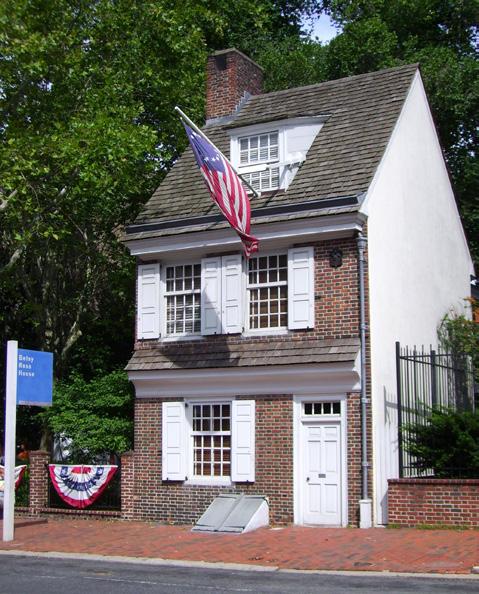
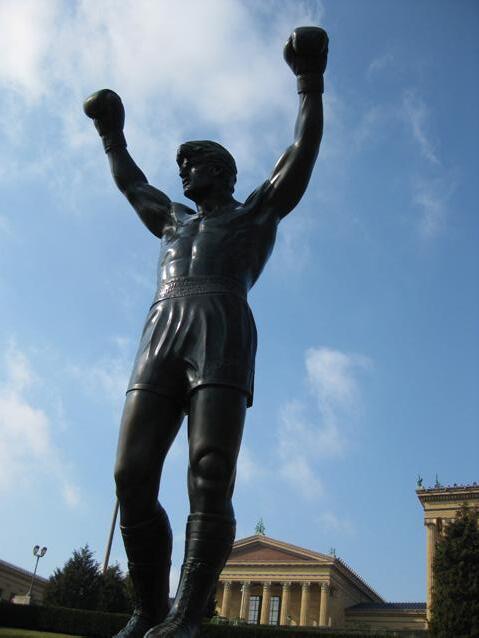

AEG News (ISSN 0899-5788; USPS 954-380) is published by the Association of Environmental & Engineering Geologists (AEG) four times per year: in April, July, and December, with the Annual Report and Directory in March. The Annual Meeting Program with Abstracts is published only digitally, in September, and the digital copies are distributed at the AEG Annual Meeting. Association members receive an electronic copy of all five issues of AEG News as part of their dues. Print subscription for Association Members, which includes all three regular issues of the AEG News and the Annual Report and Directory issue, is $40 in addition to annual membership dues. Nonmember annual subscription is $50. Back copies of AEG News regular issues are $12 each. Inquiries should be sent to manager@aegweb.org. © 2024 Association of Environmental & Engineering Geologists—All Rights Reserved
Views expressed in this publication are not necessarily those officially representing the Association of Environmental & Engineering Geologists except where expressly stated.
Acquisitions Editor: Martha Whitney, Principal Engineering Geologist, Whitney Geologic, internationalaeg@aegweb.org
Content Editor: Bill Roman, Woodsman, bill.roman.bretz@gmail.com
Managing Editor/Production: Allie Boman and Whitney Larson, Boman Editing, 765-543-4191, allie@bomanediting.com, www.bomanediting.com
In order of preference:
1. Send files via email, preferably as attachments, to both email addresses above. Optimum file format is MSWord. Users of other software programs should convert their file to ASCII or text only. Photos and other images, charts, graphs, etc. should be sent as separate images but may be included in the Word.doc for placement purposes.
2. Images should be sent as high-resolution (250 dpi at 4” wide or larger) jpeg or tiff files and should be named with a strong identifier such as HF-TexasJohn Jones —NOT P204679.jpg. Corresponding photo captions should be included in the text along with an attribution of the source/photographer.
3. The policy of AEG News editorial staff is to limit the credentials of an individual to two. No effort will be made by the AEG News editorial staff to determine whether individuals whose credentials are missing from the submitted copy actually have academic or professional credentials, nor will the staff verify the existence or correctness of the credentials submitted.
For detailed guidelines visit: https://aeg.memberclicks.net/assets/docs/aeg_news_style_guide_0713. pdf
Contact AEG at president@aegweb.org.
https://www.aegweb.org/aeg-news-2
Canada Agreement number: PM40063731; Return Undeliverable Canadian
PO Box 54; Windsor, ON N9A 6J5; Email: returnsil@imex.pb.com
Early morning in the city of brotherly love,
2023–2024 Officers
President: SARAH KALIKA
Consulting Geologist, DiabloGeo Environmental, San Ramon, CA, president@aegweb.org
Vice President/President Elect: RENEE WAWCZAK
Hydrogeologist, Norridge, IL, renee.wawczak@gmail.com
Treasurer: PAUL WEAVER
Geotechnical Geologist–Retired, Greensboro, NC, pmweaver187@gmail.com
Secretary: MARK SWANK
Senior Engineering Geologist, Aspect Consulting, Vancouver, WA, markswank@comcast.net
Past President: NATHAN SARACENO Senior Geologist, DiGioia Gray and Associates, Monroeville, PA, nrsaraceno@gmail.com
Association Contacts
Headquarters:
Association Manager: EVELYN NEALE
ARDEN SOLUTIONS
2480 West Bay Dr. #141, Belleair Bluffs, FL 33770-2620
727-940-2658 x 2004, manager@aegweb.org
AEG Foundation—Acting President: ANNA SAINDON, rmsain@gmail.com
Bill Roman, AEG News Content Editor
This issue of AEG News features a special report on AEG’s Annual Meeting in Philadelphia prepared by AEG’s meeting manager Heather Clark. In addition to reports from members of AEG’s Executive Council and the AEG Foundation, we are pleased to provide a report introducing AEG’s new association manager Arden Solutions. Visty Dalal and Minda Moe report on the work of AEG’s Membership and Diversity, Equity, and Inclusion Committees, respectively, and Cynthia Palomares shares insights on her experience as the 2023-24 Dr. Richard H. Jahns Distinguished Lecturer. Our international spotlight features an essay by Folasayo Oladeni, an aspiring Nigerian geophysicist. In the HomeFront section, Loren Laskey reports on the doings of the New York-Philadelphia Chapter, and James Hamel provides an update on the Greater Pittsburgh Chapter. Our Memorials section honors long-time AEG members Robert Schuster, Duane Krueger, and Ralph “Tex” Mock.
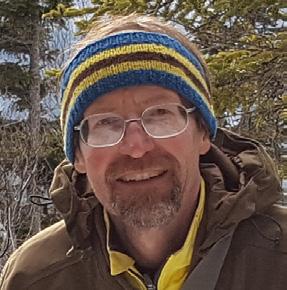
enjoyed hiking, camping, rock climbing, gardening, companion animals, knitting, sewing, and vocal music. Andie also enjoyed cooking, and in 2020, she designed, authored, and self-published a cookbook entitled A Family of Cooks containing favorite family recipes for future generations to enjoy.
In her brief retirement, Andie graciously aided and supported AEG in soliciting and bringing on board her replacement, Allie Boman, who assumed the position with the 2023 Annual Report/2024 Directory issue of AEG News. Allie is owner of Boman Editing and provides writing, editorial, and production management services for nonprofit associations, such as the Brain Injury Association of America; the Heart Rhythm Society; and the National Academies of Sciences, Engineering, and Medicine. In her work for AEG, Allie is being assisted by Whitney Larson, who is a well-established graphic designer. Allie and her husband live in the Chicago area with their four kids.
We are also sad to report on the passing of Andrea (Andie) Ptak, who recently stepped down as managing editor and production manager of AEG News. Andie started with AEG in March 2003, and she provided project management, editing, layout, and production services for AEG News, including all regular issues, the Program with Abstracts issue, and the Annual Report/Directory issue. Over the years, Andie was appreciated and admired by the many AEG leaders and AEG volunteer editors who had the opportunity to collaborate with her and benefit from her invaluable assistance. Andie valiantly guided production of each issue of the News by keeping volunteer editors on task and offering them numerous thoughtful suggestions, generating graphics and advertisements as needed, carefully editing copy, developing a pleasing design and layout for readers to enjoy, and coordinating production with commercial printers.
As an independent contractor and owner of Communicating Words & Images, Andie provided writing, editing, design, and project management services for magazines, newsletters and books. In addition to AEG, her clients included the University of Washington, Purdue University Press (IN), River Lilly Press (TX), Bloomsbury (London), Taylor & Francis (London), and a variety of independent publishers. In addition to her work in publishing, Andie was a native plant enthusiast and a certified master urban naturalist specializing in the Pacific Northwest. She

Authors alone are responsible for views expressed in signed articles. Advertisers and their agencies are solely responsible for the content of all advertisements printed and also assume responsibility for any claims arising therefrom against the publisher. AEG and AEG News reserve the right to reject any advertising copy.
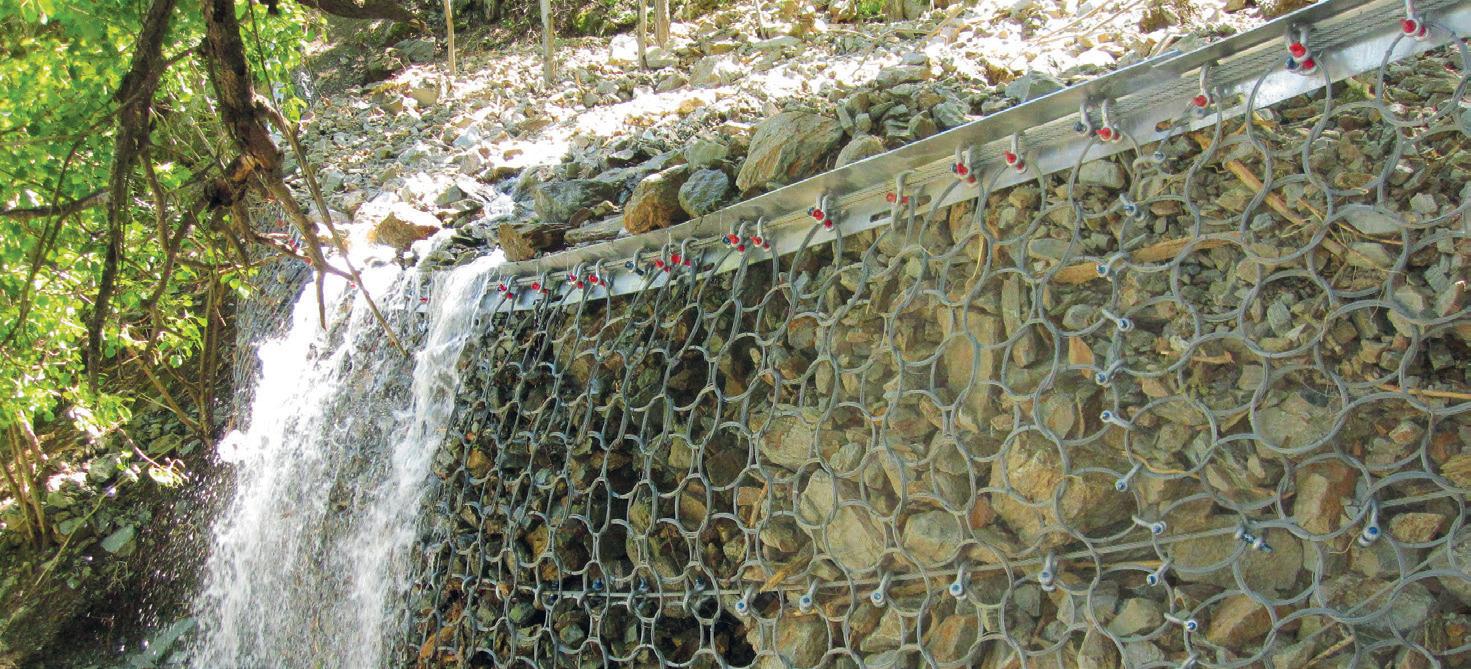
Debris Flow Hazard Mitigation
Your local Geobrugg specialist: www.geobrugg.com/contacts
Association of Environmental & Engineering Geologists
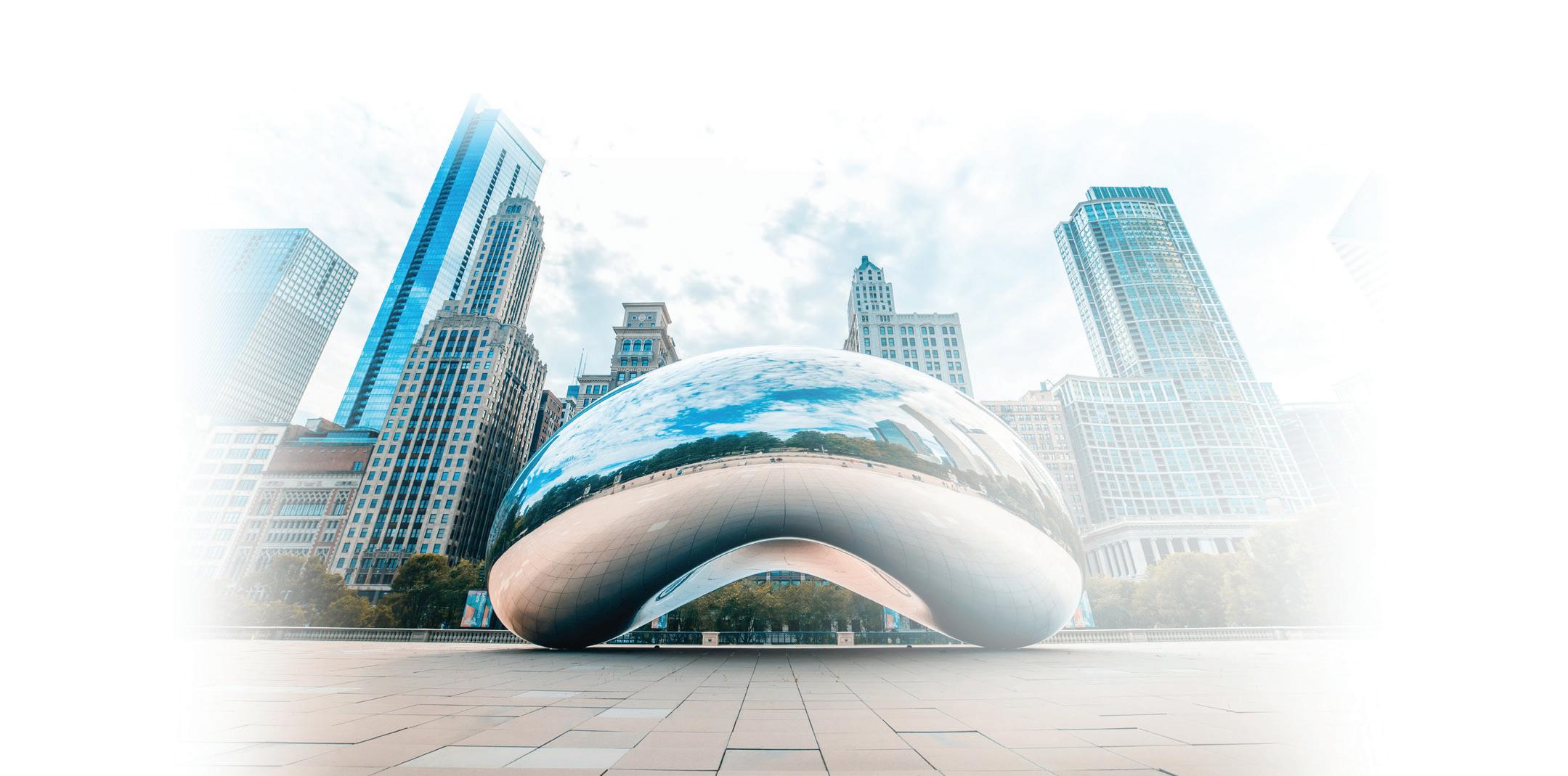
Chicago is one of the top tourist destinations in the United States for a reason. It’s a welcoming city with plenty of world-class attractions. Located on Lake Michigan in Illinois, Chicago is famed for its bold architecture. In addition to engineering geology, the AEG 2025 Annual Meeting will focus on sustainability, health, climate change, and environmental geology.
The Meeting Hotel – Located in the heart of downtown Chicago in the prestigious River North neighborhood of the city, the Westin Chicago River North’s location makes it a perfect base to explore the historic and energetic Windy City with nearby attractions including Millennium Park, Chicago theatre district, and the vibrant Chicago Riverwalk. Refreshed in early 2020, the flexible event space offers the perfect setting for meetings. Recharge in your choice of accommodations, from traditional rooms to luxury suites, all with a view of the Chicago River or the downtown skyline. Maintain your health goals with the delicious and healthy on-site dining at 320 RiverBar and the state-of-the-art WestinWorkout fitness studio. Enjoy complimentary fitness classes as well as Rise + Ride with Westin and Peloton.
September 23-27, 2025
Chicago, Illinois | Westin Chicago River North
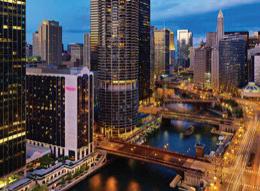
Sarah Kalika, 2023–24 AEG President
ope you’re having a fantastic summer!
I have continued my busy year with chapter visits to Puget Sound in May and Texas in July, and I will represent AEG as a speaker at the AIPG meeting in Durango, Colorado, in August. I will also represent AEG at the GSA meeting in Anaheim, CA, in September, and I’m planning a final presidential trip in October to visit the Carolinas Chapter!
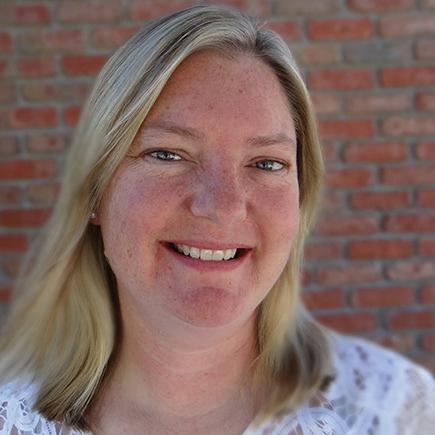
In between this travel, I managed to fit in a family vacation to Alaska by cruise ship, where I saw Dawes Glacier at 6:30am and kayaked near the base of Mt. Edgecumbe near Sitka, the location of one of the greatest “geology April Fool’s jokes of all time”—look it up! I also hosted AEG Member and novelist Deb Green during her book tour at Orinda Books and practiced my mixology skills by making her one of my favorite cocktails! I highly recommend Deb’s book No More Empty Spaces —and you can pick up a signed copy at the AEG Foundation Auction at the Annual Meeting!
I’m so excited to welcome you all to our Annual Meeting in Philadelphia this September for a truly outstanding lineup of keynote speakers, technical sessions, and symposia; fabulous field courses to hydroelectric power producer Conowingo Dam, Wissahickon Valley schist deposit, coastal resilience of Atlantic County (NJ), and the geology of Valley Forge. Don’t miss the Special Event at the historic Carpenter’s Hall (location of the First Continental Congress in 1774); Young @Heart event on the Moshulu (world’s oldest & largest square-rigged ship still afloat); and a new addition to our event lineup: Silent Disco!! At our Opening Session, we will celebrate the AEG Foundation’s student scholarship awardees and present awards to Volunteers of the Year and the Outstanding Environmental & Engineering Project. The Annual Banquet will honor our outstanding award winners who serve AEG as mentors and technical experts. Don’t forget to attend our Inclusion Luncheon on Thursday and the Closing Session on Friday afternoon, where we will present awards to our Outstanding Student Chapters, Chapters of the Year, and Environmental & Engineering Geoscience (E&EG) Journal Outstanding Paper & Editor Awards; we will also welcome our incoming Association President Renee Wawczak. Our Annual Meetings are always strongly supported by our exhibitors and sponsors, so please help me welcome them by stopping by their booths during the Icebreaker reception and Exhibitor’s Luncheon, and during our morning and afternoon breaks!
Continuing our theme this year as a “Year of Change,” we had an abrupt departure of our previous association management company in April. The Executive Council sprang into action
to open a post office box for incoming mail, handle phone calls, perform interim management duties, and publish a request for proposals to hire a new company. After an exhaustive search and multiple interviews with our short-listed candidates, AEG is excited to introduce Arden Solutions as our new management company! They began work on July 15. Arden Solutions brings over 20 years of experience in nonprofit accounting and bookkeeping. They are experts in MemberClicks (the web-based software system that handles our membership database and website). Our new Association Manager Evelyn Neale brings us over 20 years of experience as an Executive Director. AEG is confident we will be in great hands with Arden Solutions. Stop by the registration desk in Philadelphia to meet Evelyn and other members of the Arden Solutions team.
Renee Wawczak will automatically advance to President, and I’ll stay around for another year as immediate Past President. As Past President, I will be in charge of maintaining contact with our Technical Working Groups and encouraging blog posts and webinar speakers!
Due to Dr. Thomas Oommen’s elevation to co-chair of the E&EG Journal, a spot on the journal Advisory Board needed to be filled. We welcome Dr. Paul Santi to this role! A huge thanks to Skip Watts, who will be ending his term on the Advisory Board in November. If you’re interested in joining this board—we will have an additional position to fill—let us know! Additionally, AEG welcomes Kate Tuskes to represent the U.S. on the Young Engineering Geologist Board of the International Association for Engineering Geology and the Environment.
For the first time, AEG will be represented with a postcardsized flyer in the American Geosciences Institute (AGI) Earth Science Week Teacher Toolkits! This year’s theme is “Earth Science Everywhere.” These popular kits are distributed to over 9,000 teachers. AEG’s flyer features the various career opportunities of applied geology and includes a QR code linked to the Students & Teachers portion of our website to provide additional information. If you’re interested in obtaining an Earth Science Toolkit, visit https://geosciencestore. org/2024-earth-science-week-kit-earth-science-everywhere/ or contact AEG (contact@aegweb.org) to obtain one of the limited copies that we receive as a member society of AGI.
As part of the “year of change” that comprised my presidential year, AEG has had to share some rough news: losing Past President (and my 2018 Annual Meeting co-chair) Gary Luce in December, as well as Bruce Rogers, Region 8 Director, in January. In early June, I awakened to an email that Bob Schuster, namesake and first recipient of the Schuster Medal, had passed away and was preparing this information for the weekly AEG Insider when I checked my email again and was devastated to hear of the sudden passing of our friend Duane Kreuger, President of the AEG Foundation and Past President of AEG. This news hit particularly hard because, as Presidents, we were committed to maintaining communication between our Associations and frequently spoke about things like the minutia of Annual Meeting event details, ways AEG can assist with advertising Foundation scholarship opportunities, and ways our boards can complement each other’s efforts while maintaining necessary financial and management separation. Duane was a special mentor to me in AEG, and I often teased him that he was responsible for my position in Association leadership. In 2013, Duane asked me to join the Governance Committee, and the rest is history. Never underestimate the power of a direct ask!
Just before this issue of the AEG News went to print, we were informed of the passing of Andie Ptak, production editor of the AEG News for over 20 years. Knowing that the AEG News is our primary membership publication, Andie took ownership of the layout and quality of each issue to ensure that each page of content was always top notch. Andie reveled in the challenge of piecing each issue together to fit within our page limitations. Over the years, Andie worked with dozens of AEG volunteers, from editors to members of the Communications Committee and Executive Council. As the Association and AEG News were like a family member to her, when she made the decision to retire, she personally assisted with writing the request for proposals for her replacement and participated in interviewing candidates to ensure that the AEG News was passed to someone who would uphold her high standards. When our current editor Allie Boman of Boman Editing was hired, Andie remained part of the team to ensure that AEG’s transition to our new editor was seamless and provided Allie with original files and numerous tips to ensure a successful transfer of duties. Andie truly cared about AEG and our members, and I’m so pleased to have worked with her.
To close this column, inspired by how Duane and I often ended our conversations . . .I appreciate all that you do for AEG—your contributions do not go unnoticed. I challenge you all to express your appreciation to your mentors, colleagues, and friends while they are around to hear from you.
Take care of yourselves, and as always, if you have any questions about AEG or any feedback, contact me at president@aegweb.org. I’ll see you in Philadelphia.
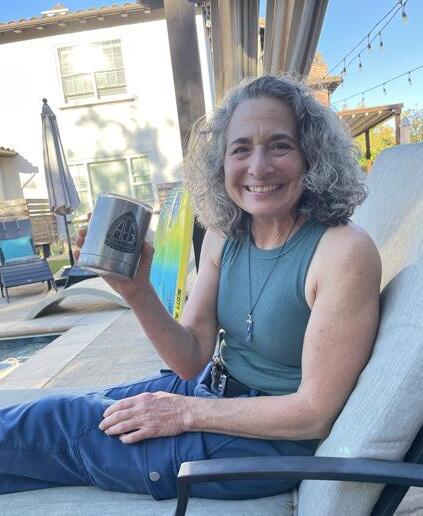
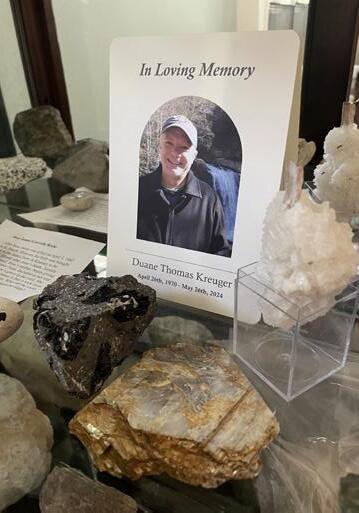

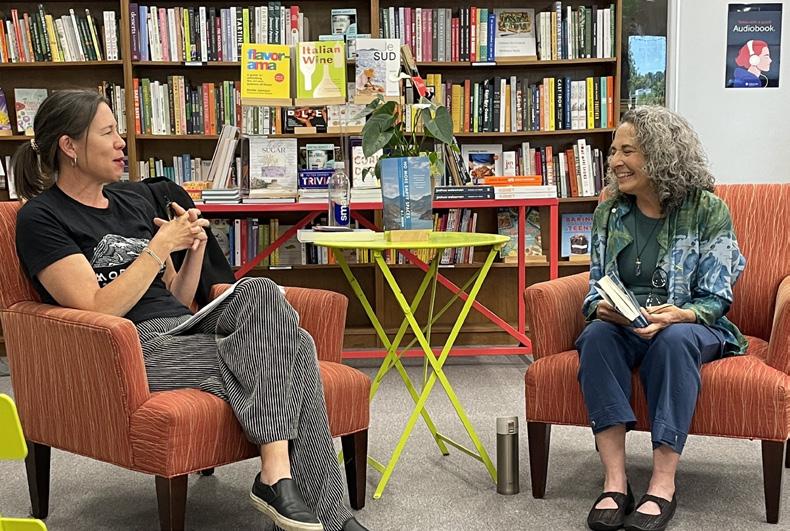
Renee Wawczak, 2023–24 AEG Vice President
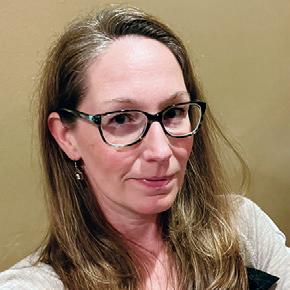
AEG held its second Annual Strategic Planning Workshop in July 2024. The meeting was held in Albuquerque, NM, and was led by Strategic Initiatives Coordinator Dale Andrews. Also in attendance was incoming Secretary Julia Frazier, Francisco “Paco” Gomez—Region 7 Director, and Vice President Renee Wawczak. A big thank you to these volunteers to give up a weekend to get together and collaborate on how to best prioritize and implement the goals and objectives that the Association Board has laid out in our Strategic Plan.
This year the team focused heavily on goals surrounding membership, communications, and how to best leverage the strengths of our new Association Management Company, Arden Solutions, to reach some of our high-level goals. The Strategic Planning Team believes this is an excellent opportunity to approach some of these goals with fresh eyes and new resources. An overview of the priorities being presented to the Board at this year’s Annual Meeting in Philadelphia, PA, will be presented during the Corporate Business Meeting at the close of the meeting week. That event is free to attend, so please join us to hear the Executive Council provide a summary of this year’s many activities!
Following the workshop, the team headed towards Sandia Mountain to check out some of the local geology. Without enough time to hike up on foot, the group elected to travel on the popular Sandia Peak Tramway. Here, we

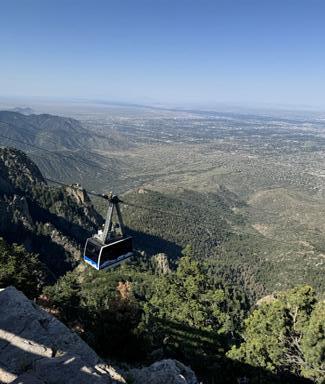
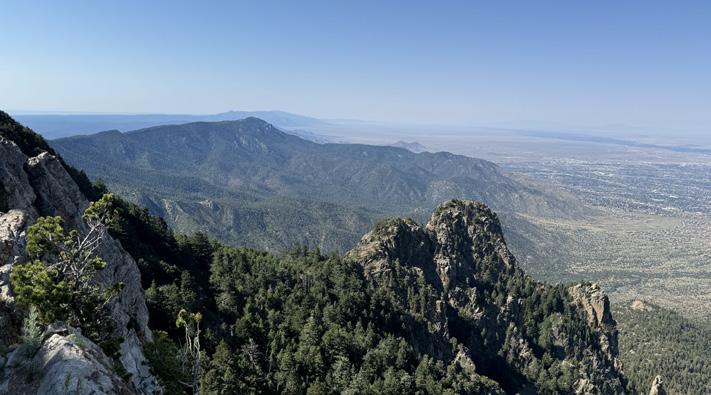
learned that Sandia is Spanish for “watermelon,” an homage to the pinkish tones from the Sandia granite, which is especially beautiful when the sun sets on the mountain. The peak is topped with limestone that contains an abundance of marine fossils. Paco easily picked out some crinoids to show the group while the rest of us were gawking at the views. The Sandia Peak Tramway is the second-longest tramway in the world, at 2.7 miles long, ascending over 4,000 feet to reach the 10,000+ foot peak. If you aren’t afraid of heights, you’ll want to secure yourself a window view to take in the sights! It was up at the top that we decided that it was well worth it to travel out for this dynamic workshop, or maybe the sudden altitude change and reduction in oxygen were playing tricks on our minds! All joking aside, this dedicated team of volunteers brought excellent ideas and discussion, as well as their sense of adventure, to wrap up another successful planning workshop. I continue to be proud and humbled by the depth of dedication members have to this Association. AEG is always looking for volunteers! Specifically, AEG is looking for additional Strategic Initiatives Coordinators and future Strategic Planning Team Members. If you have an interest in this level of volunteering with the Association, I encourage you to contact me directly at renee.wawczak@ gmail.com or Dale Andrews at dandrews.pg@gmail.com to discuss your ideas and to learn more about the role and its requirements, and how you can make a difference in AEG.

The recent, shocking passing of Duane Krueger got me thinking about all the people I’ve met and become friends with through AEG, and how AEG has become like a family to me. So, I decided to forego my usual discussion of the financial health of our organization (which is still good, by the way) and instead to focus this article on what AEG and the people of AEG have meant and still mean to me.
I became involved in AEG almost 25 years ago because Rick Kolb reached out to me about attending a meeting of what was at that time the Carolinas Section (now the Carolinas Chapter). Rick had been serving as Section Chair for a few years and was looking for someone new to step into a leadership role. Well, long story short, he convinced me to step into the Vice Chair position in which I served for about a year until I was elected Section Chair, a position I filled for four years. I have met so many great people through my involvement in the Carolinas Section/Chapter. We get together at Chapter meetings whenever we can and support each other in our careers when possible. When I was laid off during the Great Recession in 2010, I immediately sent off an email to the people I knew in the Chapter letting them know what had happened and asking them to keep their “ears open” in case they heard of any employment opportunities that might suit me. One of them asked if he could send my resume out to a few people he knew, I told him yes, and within a few hours, he informed me that he had sent my resume to hundreds of people across the country!

At the time when I served as Chair of the Carolinas Section, the Section Chairs also served on the AEG Board of Directors, which has its summer meeting immediately following the Annual Meeting. The first Annual Meeting I attended was in Lake Tahoe, and that was the first chance I got to start meeting people and making friends from all over the country. I’ve attended most Annual Meetings since that time and hope to keep attending them for many years to come. I look forward every year to seeing familiar faces, many of which I met at my first Annual Meeting, and to meeting new people who I can then look forward to seeing again at the next Annual Meeting. It’s always great to catch up on what is happening in our lives, to hear how their careers have advanced and how their kids are doing (many now grown since we first met). I was really looking forward to catching up with Duane in Philadelphia and will definitely feel the hole left by his absence. (I plan to have a Makers Mark at the hotel bar in Philadelphia in a toast to Duane and hope to find some others to join me.)
It may not be obvious to most people who meet me, but I am essentially an introvert and don’t usually find it easy to come out of my shell, introduce myself to people, and develop friendships with many people. I’ll forever be grateful to AEG for providing me the opportunity to meet and become friends with so many people from so many different places, all with the common goal of furthering the profession of Geology (and having a good time while we’re doing it!).
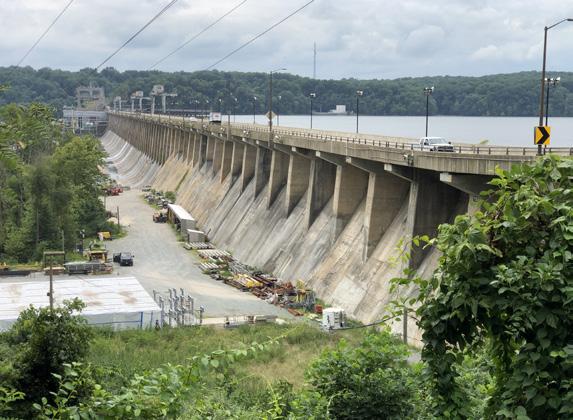
Mark Swank, 2023–24 AEG Secretary
What a crazy year—AEG leadership has been busy! We’ve been straightening out the serious curves thrown our way by our former business management company. Aside from our biweekly Executive Council (EC) calls with the President, we held online EC meetings in January and July and had our in-person EC and Board of Directors (BOD) meetings in late April in Aurora, CO. Time was well spent figuring out what had happened and planning AEG’s next steps to secure our future as a continuing successful organization. The following are highlights from this year’s meetings.

As is required under our bylaws, every five years, an ad-hoc committee made up of myself, Maddie German, Chris Hundemer, and the late Bruce Rogers (may he rest in peace) discussed and formulated new potential regional boundaries, which included the possibility of adding a new Region, for our organization to see whether the distribution of membership and chapters could be better represented. After several new Region maps were created and vetted, the ad-hoc committee presented the BOD with possible options, voted against adjusting boundaries or adding a new Region, and will revisit regional boundaries in five years.
Easily the biggest change for AEG this year was the shocking discovery of our now former business management company’s embezzlement of AEG funds (one of several organizations within their portfolio) and their termination of services in March. Many of our members may not realize our reliance, as a wholly volunteer organization, on a contracted business management company to run our day-to-day operations and the trust we must place in those individuals. They are responsible for processing bills, overseeing and providing the EC with statements for managing financial accounts, shipping, printing, scheduling, hosting servers, storing equipment, planning and making travel arrangements, and manning our registration booth at the Annual Meetings—among many other things. The abrupt halt of their existence required the EC to take on many of these responsibilities while also working to backtrack what may have been lost financially and materially over the last three years.
Most importantly, due to our review of what occurred, the BOD discussed and has implemented several changes to our accounting practices to prevent this thieving in the future, and the BOD is working with the Governance and Finance committees to establish formal bylaws and practices. Our losses, though not insignificant, appear to be much less than the other organizations involved. Our new bank account requirement for the President’s signature on all transactions, although arduous for Sarah and future Presidents, has blocked additional attempts to extract funds from our accounts.
Our EC and BOD goals have been to continue AEG operations with as little disruption to our members as possible and to contract a new business management company with time to prepare for the Annual Meeting in Philadelphia. We wanted the new company to be ramped up to provide much of the typical operations and structure to prevent complications. I’m happy to say those goals have been met.
The following Regional Director terms end this year: Region 3, Pacific; Region 5, Mountain Prairie; and Region 8, Southeast. Ballots for the Regional Director positions and EC members were sent out to the membership at the beginning of July. Welcome (back) to the BOD!
Chip Barnett—Region 3, Pacific Region
Denise Garcia—Region 5, Mountain Prairie
Hawkins Gagnon—Region 8, Southeast
Renee Wawczak, EC President
Paul Weaver—EC Vice President
Mark Swank—EC Treasurer
And welcome to the Executive Council, Julia Frazier—EC Secretary
The 2024 Annual Meeting will be held in Philadelphia, PA, at the Hilton Penn’s Landing Hotel, and all is going well with a strong planning committee. This year, we will be continuing a virtual meeting component for Tuesday at the beginning of the meeting week. Come join a great Annual Meeting covering not only geology but some of the most important landmarks in America! The Special Event will be held at historic Carpenters’ Hall and the Young @Heart event aboard the legendary Moshulu Tall Ship.
The 2025 Annual Meeting will be held in Chicago, IL, at the Westin Chicago River North Hotel; the 2026 Annual Meeting will be held in Chattanooga, TN; the 2027 Annual Meeting in Sacramento, CA, and the 2028 Annual Meeting (proposed) in St. Louis, MO. For the 2029 Annual Meeting, we are considering Alaska, San Diego, Tucson, Palm Springs, and Albuquerque. Please let us know if you’re interested in joining the planning committee for these or other cities!
See you in September!
Ginger Phillips, CEO and Founder, Arden Solutions
Arden Solutions welcomes AEG! We are here for you! Evelyn Neale is your executive director, Barbara LaGreca is your director of finance, and Jenn Breitenbach leads your member services team. As director of conferences and events, Kindra Bess will be assisting at the Annual Meeting. The entire staff “throws their hats in the air” to show our excitement at this partnership. Welcome aboard!
Founded in 2011, Arden Solutions (https://www. ardensolutions.com/ ) is a professional service organization accredited by the AMC Institute, which is a nonprofit trade organization focused on advancing professionalism and high industry standards for association management companies (https://www.amcinstitute.org/ ). Our team has worked hard to instill the ANSII Standards–approved best practices for AMCs in everything we do. A virtual company, we use technology to support our work for AEG, and to support AEG’s mission and strategic plan. We pride ourselves on transparency and thoughtful and friendly service.
We are available to AEG leaders, committees, and members by phone and email, Monday through Friday from 8am to 5pm Eastern at a phone extension and voicemail
dedicated to AEG. Our client service policy promises that we will answer your question (or confirm receipt of it while we work on the answer) within 24 hours if possible or at least within two business days. Our virtual office is located in the Tampa Bay region of Florida.
Overall, our services include association and financial management, conference and event planning, marketing and communications, grant writing, fundraising and sponsorship, government relations and advocacy, infrastructure and technology, virtual meetings and events, and much more. Our management agreement with AEG incorporates the services requested by AEG’s leadership to help fulfill AEG’s mission and goals.
If you have questions about your membership, registration, the AEG website, or anything else, please contact us right away so that we can help. The best email is manager@ aegweb.org, and the phone number is 727-940-2658 x 2004. Evelyn, Barbara, Kindra, and Jenn are looking forward to being your new AEG staff. As CEO of Arden Solutions, I am also here to be of service. My direct line is 727-223-6519.
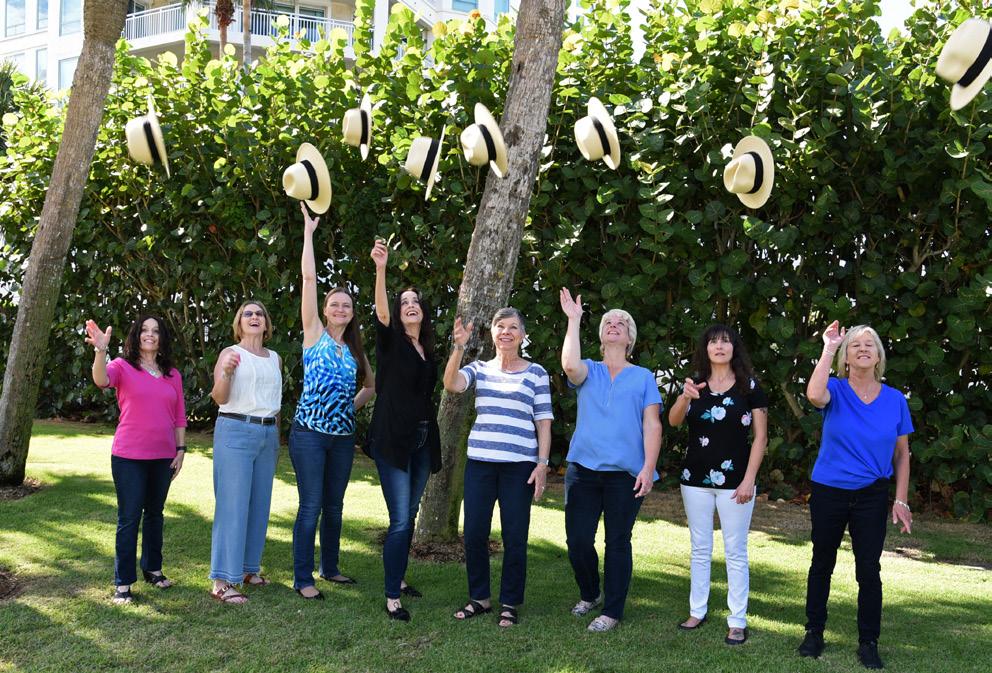

Iam honored and humbled to have been awarded the AEG/GSA Dr. Richard H. Jahns Lectureship for 2023–2024. The Jahns Distinguished Lecturer Award was established in 1988 in cosponsorship between GSA and AEG to provide funding for a distinguished environmental and engineering geologist to present an annual series of lectures at academic institutions in order to increase students’ awareness about careers in applied geology. As the 2023–2024 Jahns Lecturer, I have given approximately 45 presentations to both students and professionals, as of June 2024.

different presentations is not easy! However, after much thought, I decided to take it on. After spending the summer of 2023 preparing the presentations, I began the lectureship in the fall of 2023. After giving a kickoff Jahns talk at the 2023 AEG Annual Meeting opening session, I commenced my lecture schedule, with most visits occurring in the 2023–2024 school year. Several more visits are scheduled in the fall of 2024, when I will wrap up my tenure. During this lectureship, I’ve enjoyed interacting with many geology students at colleges and universities around the country.
Key takeaways from this time:
While President of AEG in 2020, I planned to visit various AEG chapters around the country to interact with professionals and students and to offer a technical presentation on hazardous waste management. I was able to visit five chapters during my presidency, before the COVID-19 pandemic resulted in cancellation of all remaining planned visits. This lectureship has therefore been a great opportunity to promote engineering and environmental geology to practicing professionals and students (and to finish the job I set out to do).
My presentations give students an idea of what practicing in the applied geosciences entails and hopefully will help guide them on a specific path in applied geosciences. In addition, these presentations have hopefully energized students to seek to join an applied geosciences professional society. Students and young professionals who are members of a society are more likely to maintain successful long-term careers within the geosciences.
During my lectureship, I offer six topics:
• How Climate Change Impacts Infrastructure
• From the File Room to the Field of Applied Geology: A Career Discussion
• Why Join a Professional Society?
• Regulatory Requirements for Hazardous Waste Management Units
• Hazardous Waste Operations and Emergency Response (HAZWOPER) Review or “How to stay awake during HAZWOPER training?”
• Diversity, Equity and Inclusion in the Geosciences: What Can We Do and Why Should We?
As of June 2024, the first two have been requested most often. At the opening session of the Annual Meeting in Philadelphia, I plan to present “Considering Climate Change When Siting Hazardous Waste Facilities.”
I have to admit that I was hesitant to take on this lectureship. I didn’t feel that I was a good fit, and I also knew that this would take a large amount of effort. Preparing six
These students are focused on earning their geology degrees and will do the work needed to get there.
Without interaction with geoscience professionals, most geology students don’t have a realistic idea of careers that will be available to them after they earn their geology degree. The Jahns Lectureship plays an important role in that regard, as it educates students on professions available to them and encourages them to become student members of AEG.
Because fewer students are currently enrolling in geoscience programs, many colleges and universities are combining geology with other programs, such as environmental science. Several colleges and universities that I visited have combined various science programs because of lack of enrollment. This may be a reason why many applied geoscience programs are being eliminated. The Jahns Lecturer can hopefully fill this gap by providing students with important information on how to prepare for an applied geoscience career.
The Jahns Lectureship is a very rewarding and impactful experience. I enjoyed visiting with students, academia, and professionals that are passionate about the geosciences, and I feel that the lectureship makes a positive impact on students and the geosciences profession in general. If given the opportunity, I highly recommend to anyone to take on this important role.
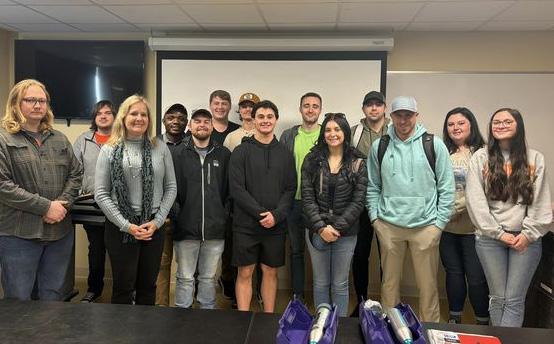

Philadelphia, PA
September 10–14, 2024
Philadelphia is situated where the Schuylkill River cascades down the Fall Line to join the tidal Delaware River. This geologic setting, at the juncture of the Piedmont Upland section of the Piedmont physiographic province and the Coastal Plain physiographic province, provided an ideal point on the Delaware River for trading ships to unload cargoes from overseas and receive wares from colonial entrepreneurs and farmers. Commerce through the Port of Philadelphia spurred the rapid rise of the City of Brotherly Love and vigorous economic growth within the Pennsylvania Colony, founded by its proprietor, William Penn, in 1681, within lands inhabited by the Lenape, Munsee, Susquehannock, Shawnee, Iroquois, and Erie prior to the influx of European immigrants.
The Piedmont Upland in the vicinity of Philadelphia consists almost entirely of Precambrian and lower Paleozoic rocks, mainly schist, gneiss, and quartzite, which have been folded and faulted with extreme complexity. Structural deformation due to plate convergence occurred during three
main orogenic episodes—the Grenville orogeny (c. 1,000 million years ago [Ma]), the Late Ordovician Taconic orogeny (c. 470–440 Ma), and the Alleghanian orogeny (c. 300–245 Ma). The surface of the Piedmont Upland slopes gently southeastward, and at the Fall Line, it passes beneath unconsolidated to poorly consolidated Tertiary deposits of sand and gravel, which lie unconformably on top of it. Closer to the Delaware River, Philadelphia surficial materials consist of Quaternary deposits of very gravelly sand, named the Trenton Gravel.
To the northwest, the Piedmont Upland is bounded by the Gettysburg-Newark Lowland section of the Piedmont physiographic province. This section consists mainly of northwest-dipping beds of Triassic red shale, siltstone, sandstone, and conglomerate deposited within a half graben formed by rifting due to plate divergence in the Late Triassic to Early Jurassic (c. 230–190 Ma). These sedimentary rocks were intruded extensively in the Early Jurassic by a complex igneous network of diabase sheets and dikes. In some areas, an aureole of hornfels developed along the contact between the diabase intrusion and the sedimentary country rock.
The fascinating geology of southeastern Pennsylvania can be observed at several parks and other locations in the Philadelphia region. C. David Brown of the Philadelphia Geological Society compiled the following list:
French Creek State Park
Location: Berks Co and Chester Co
Physiography: Gettysburg-Newark Lowland Section, Piedmont
A wide range of rock ages can be seen in the park, from some of the oldest rocks to the youngest volcanic rocks in Pennsylvania. Small boulders of Precambrian gneisses, about 1 billion years old, are found east of Mount Pleasant. Nearby are weathered blocks of late Precambrian to early Cambrian (c. 550 Ma) quartzite. A large area of the park is covered by Triassic sandstones and conglomerates. These rocks were deposited in a rift basin, probably underwater, during the breakup of the supercontinent Pangea, about 210–250 Ma. Lastly, a 200-million-year-old Jurassic diabase sheet is exposed in the northeast area of the park. This magmatic intrusion, also associated with continental rifting, was emplaced below ground and has subsequently been exposed by erosion. Magnetite ore bodies formed by this volcanic activity were the source of iron produced at the adjacent Hopewell Furnace National Historic Site.
Resources:
• Inners, J. D., and W. B. Fergusson. 1996. Geological Guide: French Creek State Park. Harrisburg, PA: Pennsylvania Department of Conservation and Natural Resources. Updated 2016.
• French Creek State Park

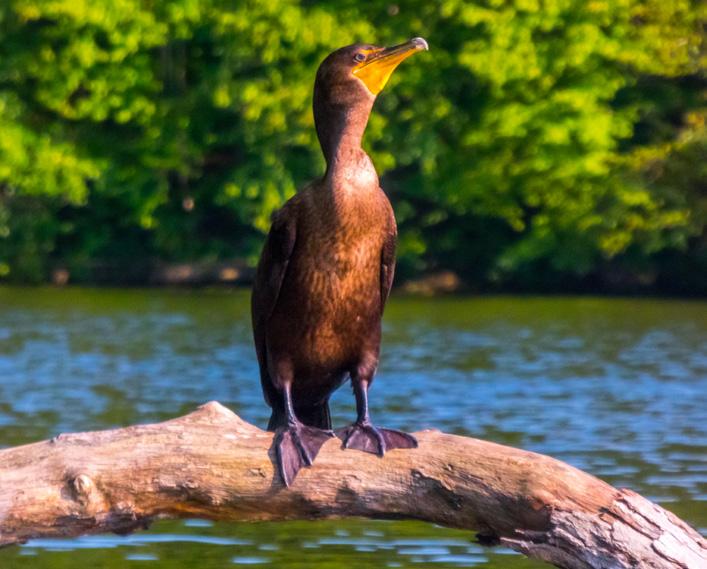
Location: Bucks Co
Physiography: Gettysburg-Newark Lowland Section, Piedmont
This park, located in the early Mesozoic Newark Basin, exhibits examples of sedimentary, igneous, and metamorphic rocks in a continental rift environment. In the Late Triassic Period (c. 220 Ma), Pangea began to rift apart, eventually forming the Atlantic Ocean. The tectonic stresses associated with the rifting also disrupted what is now the North American continental margin, and the Gettysburg-Newark Basin is one manifestation of these forces. The elongate, northeasttrending basin was sometimes filled with shallow lakes and at other times contained rivers and floodplains. The sediments deposited in the basin during the Late Triassic and Early Jurassic can be seen in the park today as the shales and siltstones of the Lockatong and Brunswick formations. A portion of the diabase sill, or sheet, is also exposed in the park. The rifting of Pangea caused upwelling of magma from the mantle. The magma nearly reached the surface and intruded the sedimentary rocks in the basin about 200 Ma. Heat from the diabase sill metamorphosed the adjacent rocks; hornfels, the resulting contact metamorphic rock, can also be found in the park. The hornfels was removed from the Tohickon quarry for construction. At the quarry, one can find hornfels samples containing large epidote crystals, up to 2 inches across.
Resources:
• Inners, J. D. 1980. Nockamixon State Park, Bucks County—Rocks and Joints. Pennsylvania Geological Survey, 4th ser., Trail of Geology 16-014.0.
• Nockamixon State Park
Location: Bridgeton Township, Bucks Co
Physiography: Gettysburg-Newark Lowland Section, Piedmont
This park encompasses a diabase boulder field, one of the largest in the eastern United States. The boulder field formed during the Pleistocene Epoch ice ages (10,000 years ago to 1.8 Ma). Although this part of the state was not glaciated, the cold climate caused the ground to be frozen as permafrost. This tundra environment was accompanied by periglacial geologic activity, and the boulder field formed by two distinct periglacial processes. First, the well jointed (that is, fractured) diabase bedrock was progressively broken apart by cyclic freezing and thawing of water in the cracks (frost wedging). Second, these large fragments slowly moved down a gentle slope to accumulate into a field (solifluction). In the summer, the surficial ice would melt, and the water-saturated soil would lubricate the gradual creep of the boulders downhill on top of the permafrost. Today, the boulders field is called Ringing Rocks because the boulders emit distinct tones when struck by a hammer, due to the iron content of the diabase, the size of the boulder, and its contacts with adjacent boulders.
Resources:
• Geyer, A. R. 1969. Hickory Run State Park—Boulder Field. Pennsylvania Geological Survey, 4th ser., Trail of Geology 16-002.0.
• Ringing Rocks County Park
Ringing Rocks
Location: Lower Pottsgrove Township, Montgomery Co
Physiography: Gettysburg-Newark Lowland Section, Piedmont
This diabase boulder field is located in Ringing Hill Fire Company Park. Directions: 1.2 mi north of Pottstown on Pennsylvania Rte 663 (North Charlotte St); enter at intersection of highway and White Pine Ln.
State-Line Serpentine Barrens
Location: Chester Co
Physiography: Piedmont Upland Section, Piedmont
Serpentinite is a metamorphic rock, composed partly of the mineral serpentine, formed by hydrothermal alteration of rocks usually found in the upper mantle. Serpentinites are often associated with ophiolites, sections of the oceanic crust and mantle that have been tectonically emplaced on continental margins during subduction. Owing to a high level of toxic metals and a deficiency in nutrients, serpentinite outcrops sustain only certain types of plants. These desert-like barrens are ecologically unique and host rare plant and animal species. The chain of serpentine barrens found along the Pennsylvania–Maryland border is one of only three such occurrences in North America. The underlying serpentinite body (Baltimore Mafic Complex)
formed in the Cambrian Period (c. 490 Ma) and was probably deformed and attached to the continent by the Taconic orogeny in the Ordovician Period (c. 450 Ma). The igneous precursor rocks may have originated as part of an oceanic plate or as a magmatic intrusion into the crust of an island arc. The barrens were a major locale for chromite mining in the 19th century. Serpentine barrens can also be explored at several Nature Conservancy preserves, including the Chrome and Goat Hill serpentine barrens in Chester Co.
Resources:
• Reese, S. O. 2016. Goat Hill Serpentine Barrens, Chester Co. Pennsylvania Geological Survey, 4th ser., Trail of Geology 16-100.0.
• Nottingham County Park
• State-Line Serpentine Barrens
• Soldiers Delight Natural Area
Valley Forge National Historical Park
Location: Montgomery Co and Chester Co
Physiography: Gettysburg-Newark Lowland Section, Piedmont
The geologic units found in the park are primarily Cambrian and Triassic sedimentary rocks, whcih formed in a time gap of some 300 million years. The Cambrian units include detrital sedimentary rocks of the Chickies and Antietam Formations (Chilhowee Group), which include sandstones, siltstones, and mudstones, as well as chemical sedimentary rocks, such as the Elbrook and Conestoga Formation limestones and the Ledger Formation dolostone. These Cambrian strata reflect a time of changing sedimentary environment as the continental margin subsided and the sea deepened as it moved inland. Stromatolites in the Ledger dolostone reveal evidence for algae colonies some 500 Ma. Folding in these rocks was caused by the Taconic orogeny which occurred in the Ordovician (c. 450 Ma), and subsequent Paleozoic orogenies. The breakup of Pangea about 250 Ma formed the Newark rift basin, wherein the Triassic Stockton formation red sandstones and shales were deposited. The sedimentary environment at that time was above sea level, and sediments were deposited from streams and sometimes in lakes. In the park one can see the Cambrian dolostone in contact with the Triassic sandstone. Geologic records from that interval have been erased by erosion, leaving only the unconformity.
Resources:
• Wiswall, C. G. 1993. Valley Forge National Historical Park, Montgomery and Chester Counties—The Geologic History. Pennsylvania Geological Survey, 4th ser., Trail of Geology 16-008.0.
• Valley Forge National Historical Park
Location: Chester County, Pennsylvania, and New Castle County, Delaware
Physiography: Piedmont Upland Section of the Piedmont Province
Metamorphic rocks of the Wissahickon Formation (Glenarm Supergroup) are displayed in the preserve. The parent rocks of the Wissahickon were mudstones, siltstones, and sandstones that were deposited from the late Precambrian through the Ordovician. Metamorphism occurred during the Late Ordovician Taconic orogeny (c. 450 Ma); the resulting rocks seen here are schists. Examples of amphibolites are also found; they are probably the product of metamorphosed volcanic basalt flows and/or diabase sills. Pegmatites (large crystals of quartz and feldspar) were deposited hydrothermally in the Wissahickon schists. These materials were uplifted in the Devonian Period (c. 380 Ma) by the Acadian orogeny.
Resources:
• Faill, R. T. 1991. White Clay Creek Preserve, Chester County, Pennsylvania; New Castle County, Delaware—A Scenic Valley and the Arc Corner. Pennsylvania Geological Survey, 4th ser., Trail of Geology 16-020.0.
• White Clay Creek Preserve
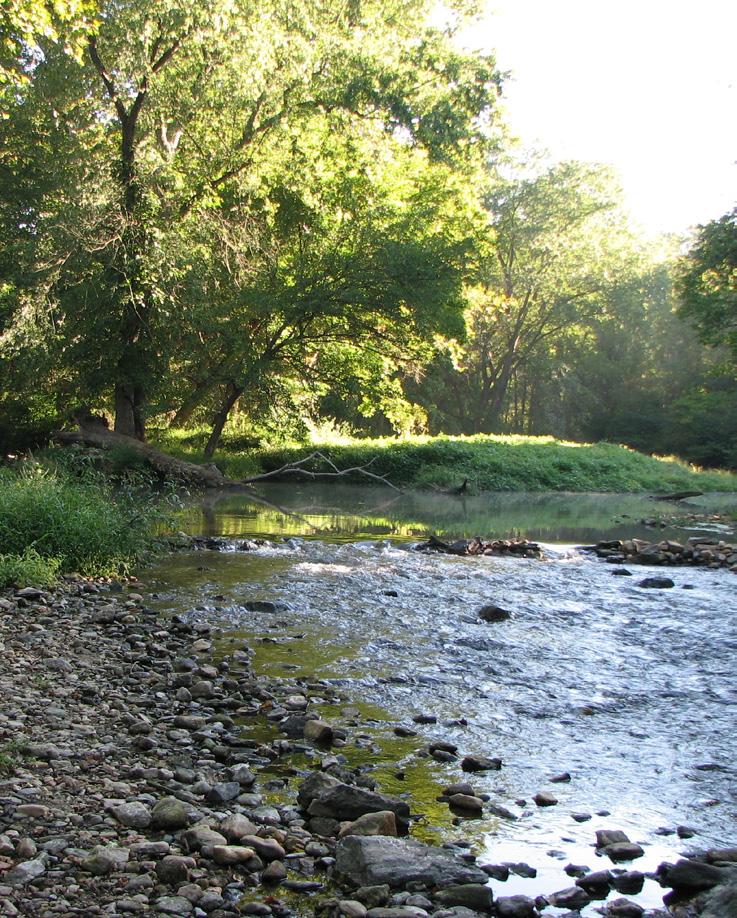
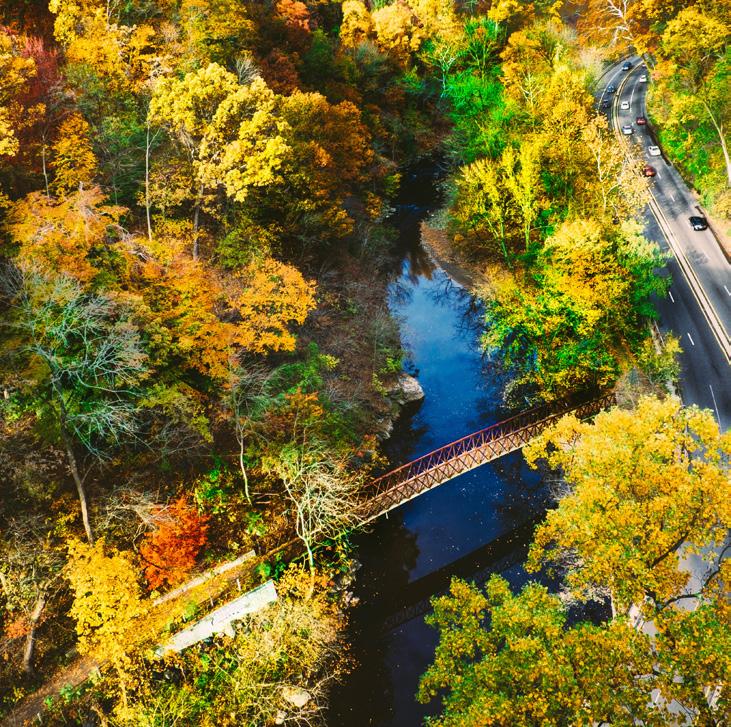
Location: Philadelphia City and County
Physiography: Piedmont Upland Section of the Piedmont Province
Wissahickon Valley is a rugged area of Fairmount Park bordering Wissahickon Creek. This is a great place to see early Paleozoic metamorphic rocks; the best outcrops are on the hiking trail along the east side of the creek. These rocks were originally sediments deposited in the shallow Iapetus Ocean covering Pennsylvania in the late Precambrian, Cambrian, and Ordovician periods (c. 460–600 Ma). When compacted, these materials formed clay-rich sedimentary rocks (e.g., shale). In the Ordovician Period, the eastern edge of the North American plate began subducting beneath an offshore island arc in the Iapetus Ocean. Continuing subduction brought the island arc closer to Pennsylvania, leading to its eventual collision with the continent in the Late Ordovician (c. 450 Ma). This event is called the Taconic orogeny. A mountain belt formed northeast of Pennsylvania, but metamorphism and deformation also occurred in the state. The seafloor sedimentary rocks were buried and subjected to high pressures and temperatures—400–600 degrees Celsius (750–1100 degrees Fahrenheit). This metamorphism converted the strata to rocks such as schist and gneiss. Some of the schists in the park contain small garnet crystals, recognizable by their dark red, translucent appearance. Other outcrops demonstrate that the rocks experienced stresses causing them to flow during metamorphism.
Resources:
• Friends of the Wissahickon
• Fairmount Park Commission
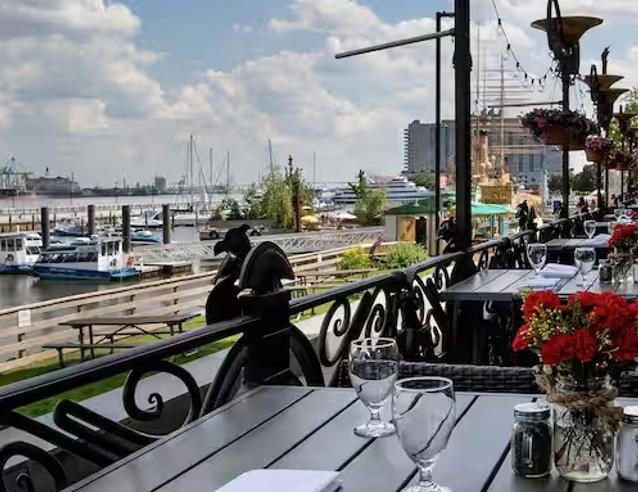
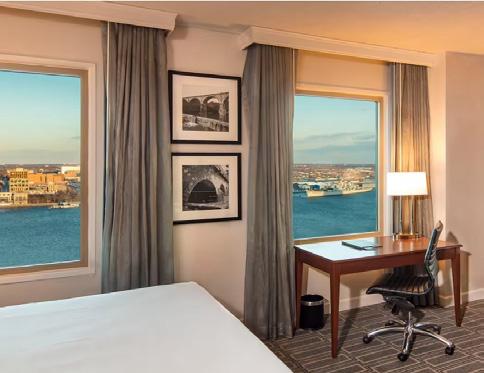
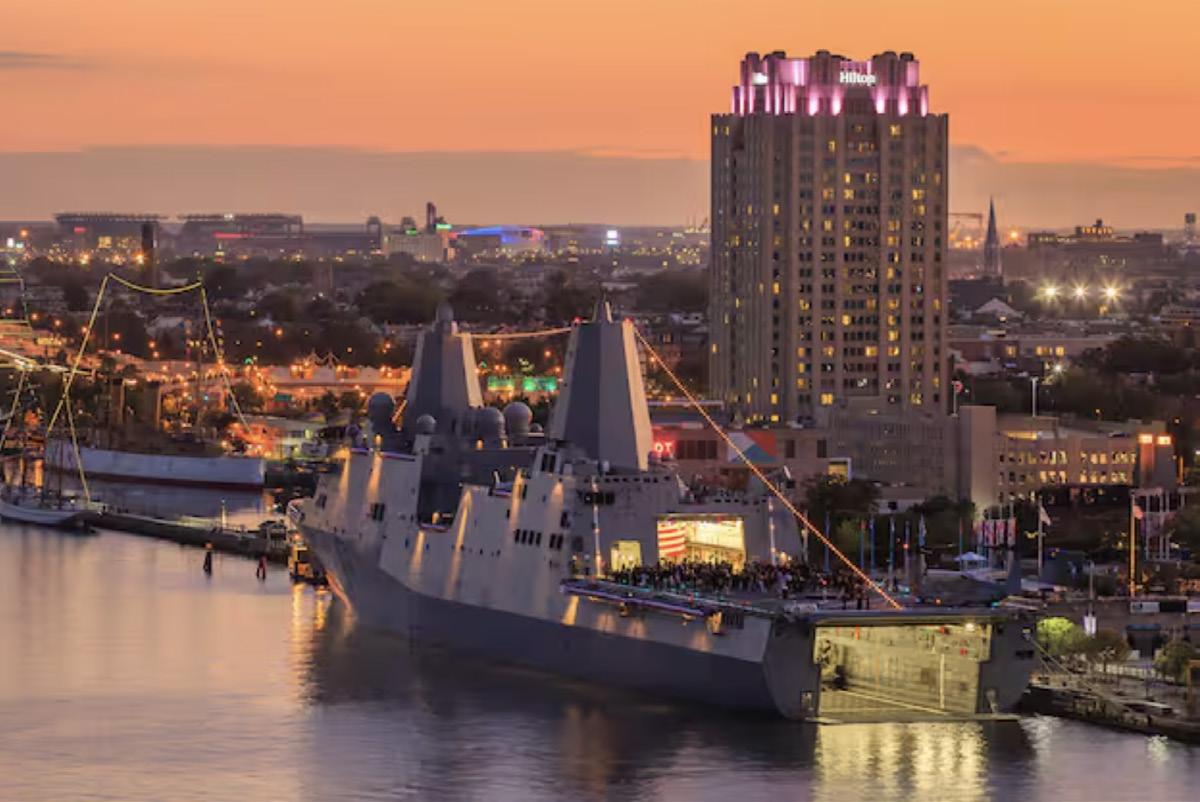
We look forward to welcoming you to Philly! Philadelphia, the nation’s birthplace and capital from 1790 to 1800, is renowned for its rich history on display at the Liberty Bell, Independence Hall, and many other historical sites. Also iconic are its cheesesteaks and the steps of the Philadelphia Museum of Art immortalized by Sylvester Stallone’s triumphant run in the film Rocky.
The country’s first World Heritage City, Philadelphia is also the birthplace of the United States, where our Founding Fathers met, discussed, debated, and formed a new country. Lucky for 21st-century visitors, much of Philadelphia’s history has been preserved. That includes, of course, two of the city’s most important attractions: Independence Hall (one of only a dozen World Heritage cultural sites in the country and where the Declaration of Independence and U.S. Constitution were drafted and signed) and the Liberty Bell (a symbol of the abolitionist movement).
It also includes the historic houses, government buildings, museums, churches, and cemeteries that make up Independence National Historical Park, the “most historic square mile in America,” which is managed by the National Park Service and visited by millions of people every year. Elsewhere, visitors soak up the region’s history in the quaint, explorable alleyways of Old City and Society Hill, at the city’s excellent history museums (Museum of the American Revolution, Weitzman National Museum of American Jewish History, the African American Museum), and throughout the Greater Philadelphia region at sites made famous by the
American Revolution (Valley Forge National Historical Park).
In September, the weather in Philadelphia can be quite mild, ranging from the upper 70s to the low 80s. Clothing made of light and breathable fabrics such as linen, cotton, or rayon are comfortable choices. It’s important to layer your clothing so you can easily adjust to cooler evenings. For shoes, sneakers or sandals are a good option as they provide both comfort and style while still being able to endure city walking.
Hilton Penn’s Landing
201 S Christopher Columbus Blvd, Philadelphia, PA 19106
Group Rate of $239 (plus taxes and fees) expires on August 19, 2024
Reserve your room now—group rate rooms will sell out.
Set on the Delaware River, this upscale hotel is 1.5 miles from Reading Terminal Market farmers’ market and a 2.7-mile drive from the Mütter Museum. Warm, polished rooms offer custom-designed beds, minifridges, and coffeemakers, plus flat-screens, plug-and-play electrical hubs and Wi-Fi (free if you use the group reservation system). Upgraded rooms add river or city views. Suites include living areas with pull-out sofas and/or balconies. Enjoy waterfront dining with a focus on locally sourced ingredients and sustainable seafood at Keating’s Rope & Anchor Bar + Kitchen. In the lobby, Ellis Coffee serves pastries and both hot and iced coffee. There’s also a gym, sauna, indoor pool, and 24-hour business center.
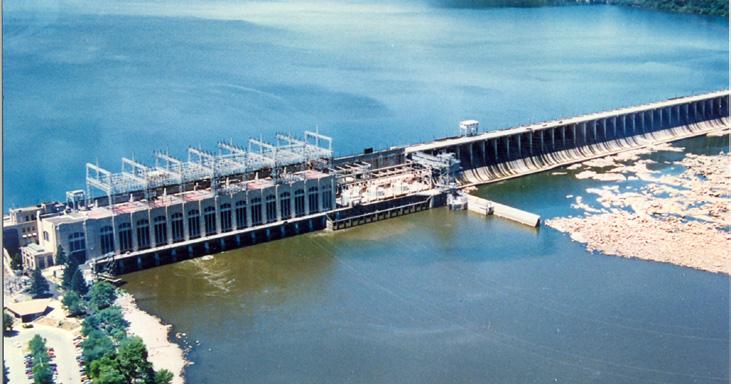
Conowingo Dam, Maryland
Date: Tuesday, September 10, 2024
Time: 8:30am–4:30pm
Leader: Dr. Visty P. Dalal Sr., Engineering Geologist, Dam Safety Division, Water and Science Administration, Maryland Department of the Environment
Fee: $150/person, includes box lunch and bottled water
Attendees: Minimum 20, maximum 30
Activity Level: Moderate, with long walking over and through the dam
Equipment: We recommended that all field course attendees wear closed-toe, hard-soled shoes for their protection during the site visit. Hard hats, earplugs, and glasses will be provided.
Conowingo Dam (i.e., Conowingo Hydroelectric Plant) is in Conowingo, Maryland. The dam sits in the Lower Susquehanna River, about 9.9 miles from the mouth of the river and the Chesapeake Bay, the second-largest estuary in the world. It is a masonry gravity dam, built in 1928, now owned by Constellation Energy. The total length of the dam is 4,649 feet, with a height of 94 feet. The dam supports a 9,000-acre reservoir with an active capacity of 71,000 acre-feet. In 1925, Philadelphia Electric Company awarded the construction contract to Stone & Webster of Boston. Construction started in 1926 and was completed in 1928. During this time, it was the second-largest hydroelectric project in the U.S. after Niagara Falls. The dam has 11 turbines that generate 548 megawatts electricity at 13,800 volts used to power Philadelphia, Pennsylvania. The dam has 53 flood gates that are selectively operated when the lake levels rise because of storm events. The maximum water depth in the lake is 105 feet. The impounded river forms the 14-mile-long Conowingo Reservoir. The lake is used for water supply to Baltimore and Chester Water Authority, as well as for the cooling plant at Peach Bottom Nuclear Power Plant. The Susquehanna is the East Coast’s longest river and is the best spot in the U.S. for seeing bald eagles. From November through January, eagle-eyed birdwatchers arrive from far-flung destinations to view hundreds of the birds that have migrated from New York and Canada.
Wissahickon Valley, Philadelphia, Pennsylvania
Date: Tuesday, September 10, 2024
Time: 8:00am–12:00pm
Leader: Natalie P. Flynn, PhD, Earth and Environmental Science Department, Temple University
Fee: $95/person
Attendees: Minimum 20
Activity Level: Moderate, with hiking on a gravel trail as well as narrow wooded dirt and rocky trails, approximately 2 miles of walking total.
The Wissahickon Valley is a Philadelphia geologic treasure. This portion of the Wissahickon Valley is preserved as parkland within the Fairmount Park system and is surrounded by suburban and urban neighborhoods. The walk will begin at the parking lot for Valley Green Inn and extend along Forbidden Drive, with multiple stops along Forbidden Drive. The Wissahickon Valley is part of the Piedmont Plateau and consists of metamorphic pre-Cambrian and lower Paleozoic rocks. The field trip will provide an overview of the geologic setting that formed the Wissahickon area. The predominant rock types are metamorphic schist, gneiss, amphibolite, and igneous pegmatites. The schists contain a variety of index minerals, such as chlorite, muscovite mica, and biotite mica, along with tourmaline, garnets, and staurolite. The high-grade metamorphic gneiss is primarily feldspar amphiboles from former sedimentary rocks, granites, and schists. Pegmatites are also present in the form of migmatites. The stops will highlight different types of rocks in the Wissahickon, generally starting at the lowest grade of the Wissahickon and moving up the index mineral zone from mica to garnets, kyanite, and tourmaline. Discussions will include protolith, index minerals, and isograds. Additional optional stops along the trip include a mafic protolith sections and an outcrop of anthophyllite. Geologic understanding and interpretation of the lithology of the Wissahickon has evolved over 100 years or more. Dr. Flynn is eager to share her insight on the complex geology of the Wissahickon Formation.
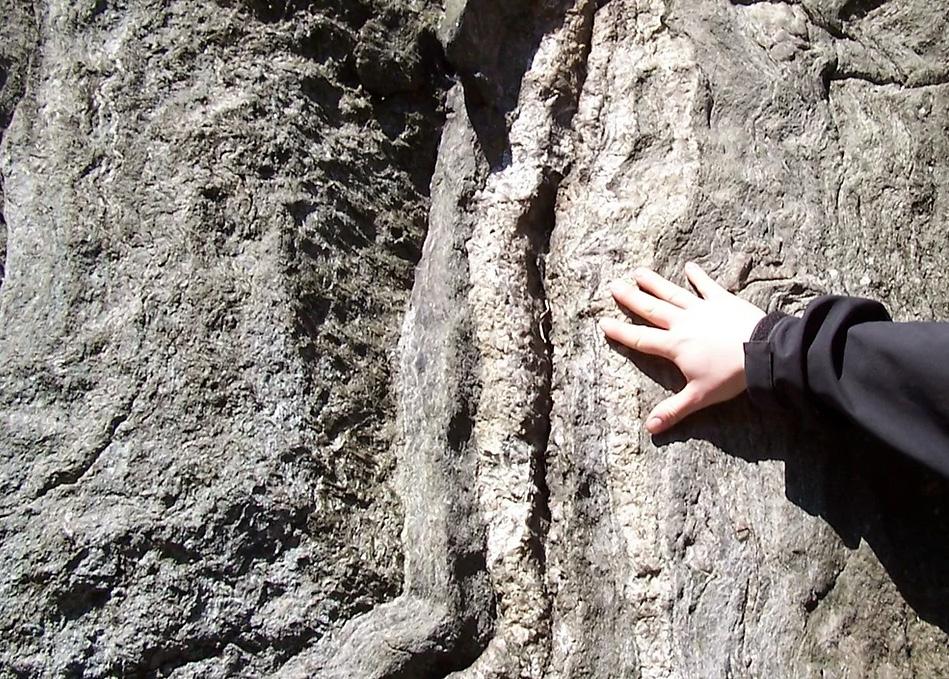
Absecon Island and Brigantine Island, Atlantic County, New Jersey
Date: Tuesday, September 10, 2024
Time: 8:30am–4:30pm
Leader: Kimberly McKenna, Stockton University Coastal Research Center Fee: $165/person
Attendees: Minimum 35
This field trip will explore portions of Absecon Island and Brigantine Island and will showcase coastal resilience efforts that address coastal storm risk, shorelines, navigation/dredging, and flooding. This region was “on the good side” of Hurricane Sandy as it made landfall north of Atlantic City/Brigantine Island. While this region was spared the large storm waves, overwash occurred in northern Brigantine Island. On Absecon Island, there was limited dune scarping, but back barrier flooding was significant.
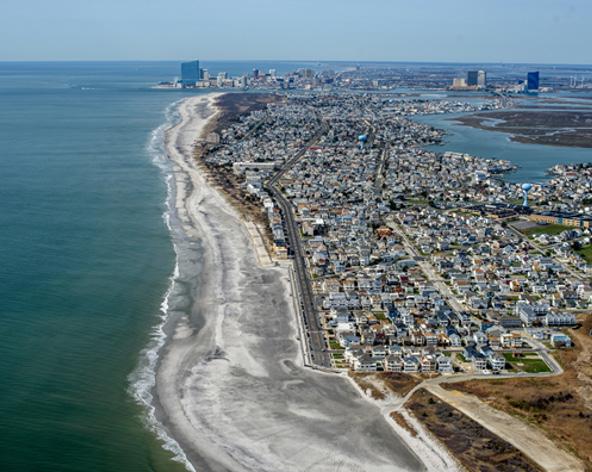
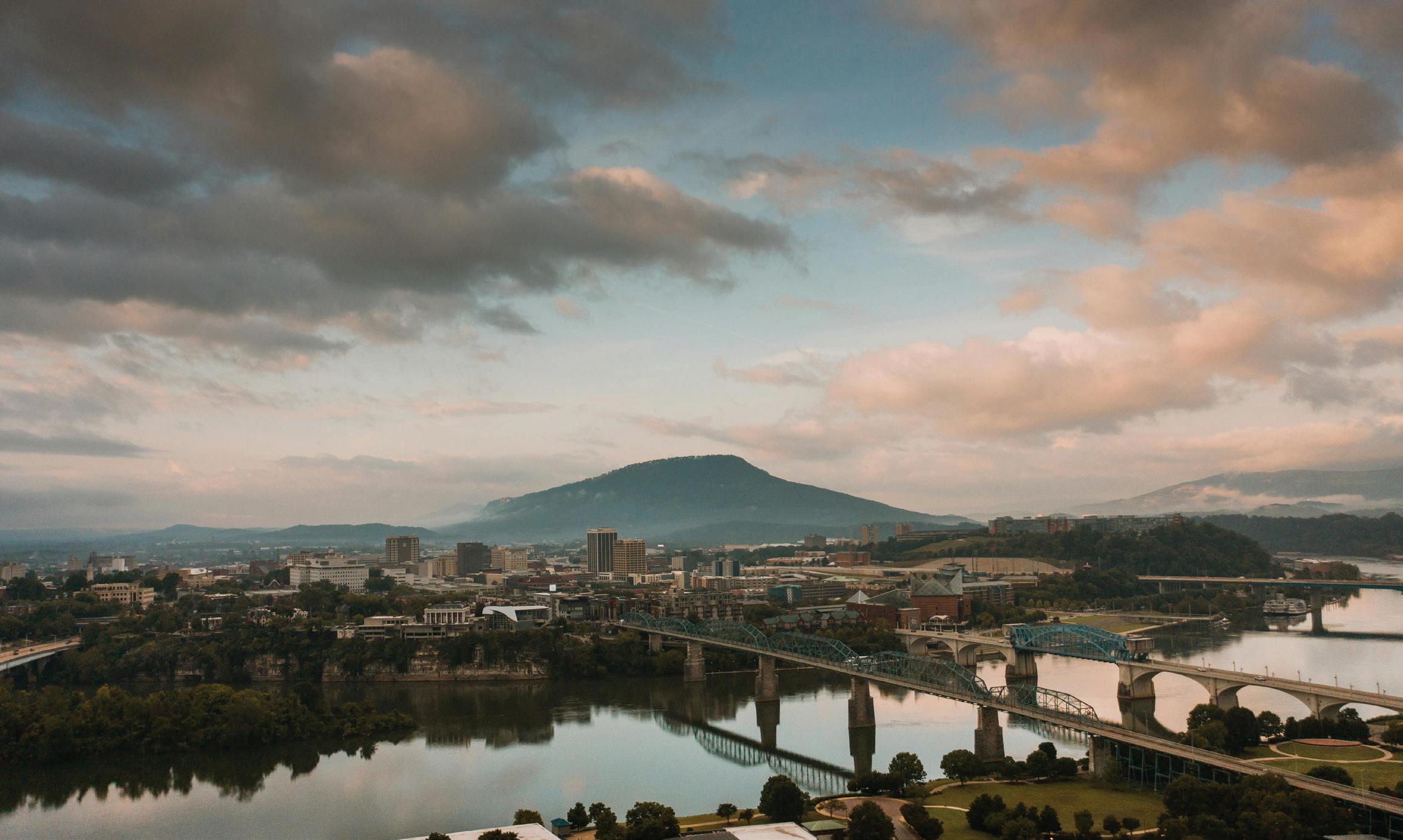
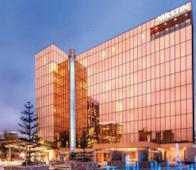
The Westin is located in the middle of downtown and walking distance to local restaurants, attractions, boutique shops, and local breweries. After a day of sessions, enjoy southern cuisine at the hotel restaurant or the rooftop restaurant and bar. All rooms include large windows with views of the mountains or downtown.
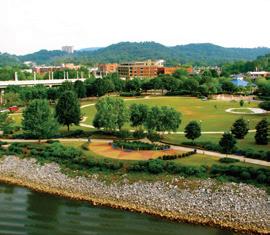

The 2026 Annual Meeting will be filled with outstanding technical sessions, exciting field courses, and fun networking events.

Tennessee River dinner cruise on the Southern Belle Riverboat. The highlight will be locking through Chickamauga Dam.







Note: Field Course 4 is canceled
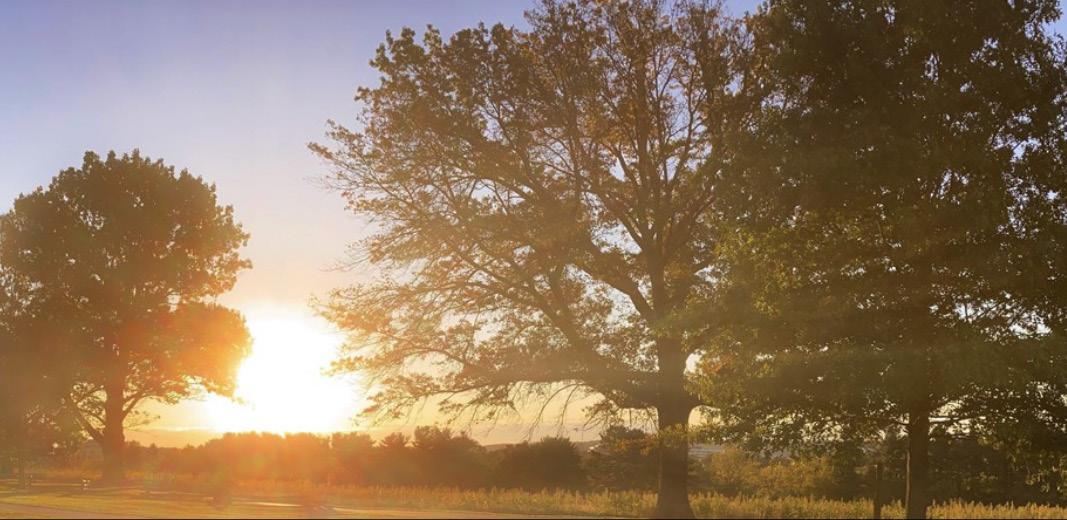
Valley Forge National Historical Park
Date: Saturday, September 14, 2024
Time: 8:30am-4:30pm
Leaders: Eric Pyle, PhD, Department of Geology & Environmental Science, James Madison University and “Department of the Geographer” of the Continental Army; Nelson Abrams, PG, Director of Environmental Services, Distinct Engineering Solutions, Inc., and Department of the Geographer of the Continental Army; Bethany L. Dhunjisha, Park Ranger, Valley Forge National Historical Park Fee: $150/person
Attendees: Minimum 35
Valley Forge National Historic Park is rich in American history—but how did geology influence the choices made by the Continental Army of 1777?
Valley Forge is a prominent bookmark in American history curricula, but seldom is the deep geologic history that supported basing an army here across a bitter winter considered (outside of the region). The region was well known in the 18th century for its economic value from mining and iron production (Valley of the Forges), and from quarrying. Establishing and supporting an encampment at scale required knowledge and skill, with surveying and mapmaking as well. Join experienced Revolutionary War reenactors (who are geologists too!), national park staff, and local experts for a deep dive into the geology and geomorphology of Valley Forge, exploring both the distant past, as well as the recent past of asbestos disposal and sequestration. Prehistoric elements include extensive karst features, including Bone Cave, noted for its record of Pleistocene life in periglacial terranes. Taken in combination, the geologic, historical, economic, and aesthetic qualities of Valley Forge provide a rich picture of the geoheritage of Valley Forge beyond the single dimension of the typical historical narrative.
Posters will be presented on Wednesday, September 11, and Thursday, September 12. We will be awarding winners of the Student Poster Competition at the poster reception on Thursday, from 5:00pm to 6:30pm. A drink ticket is included for all full, Thursday-only, and student registrations.
Monday, September 9, 2024
10:00am–3:00pm Eastern Time (online only)
$100 for members / $150 for nonmembers
(Included with Annual Meeting full and student registrations)
Join us for the AEG Annual Meeting Virtual Day. This will be an online-only day of technical presentations for those who would like to participate in the Annual Meeting but are unable to attend in person. Registration for this event will be included with all Annual Meeting full and student registrations. All presentations will be recorded for later viewing. Six professional development hours will be available for this session.
Wednesday, September 11—Morning
Opening Session
Moderator: AEG President Sarah Kalika
Time: 8:00am–12:00pm
Welcome: Sarah Kalika, Curt Schmidt and Niall Henshaw
AEG Volunteer Recognition Award: Gerry Stirewalt and Courtney Johnson
AEG Advocacy Award: John McPhee
AEG Foundation Awards: Anna Saindon
Pennsylvania State Geologist: Dr. Gale Blackmer
Keynote: Assistant NJDEP Commissioner David Haymes
OEEG Project Award: Paw Paw Slope Stabilization Project— Chesapeake & Ohio Canal Natl Historic Park—Joseph Reed 2023-2024 Jahns Lecturer: Cynthia Palomares
Introduction of 2024-2025 Jahns Lecturer: John Kemeny
Wednesday, September 11—Afternoon
Technical Session #1: DEI Symposium: DEI—Shine the Light
Convener: Deborah Green
Time: 2:00–5:00pm
Technical Session #2: Tunneling
Conveners: Paul Headland, Ike Isaacson, and Mike Piepenburg
Time: 2:00–5:00pm
Technical Session #3: Karst Symposium
In partnership with Society of Exploration Geophysicists
Conveners: Mia Painter and Kathryn Murdock
Time: 2:00–5:00pm
Technical Session #4: Coastal Hazards
Moderator: William Godwin
Time: 2:00–5:00pm
Thursday, September 12—Morning
Technical Session #5: GASH Case Histories for Evaluation of Geologic and Seismic Hazards Part I
Convenors: Gerry Stirewalt and Courtney Johnson
Time: 8:00am–12:00pm
Technical Session #6A: Environmental Site Characterization Symposium
Conveners: Sarah Kalika and Rick Kolb
Time: 8:00–10:00am
Technical Session #6B: Environmental and Mining Topics
Moderator: Rick Kolb / Time: 10:20am–12:00pm
Technical Session #7: Dams and Levees Symposium, Part I
Conveners: Cassie Wagner and Hawkins Gagnon
Time: 8:00am–12:00pm
Technical Session #8: Land Subsidence Symposium Part I
Conveners: James Borchers and Danielle Smilovsky
Time: 8:00am–12:00pm
Thursday, September 11—Afternoon
Tech Session #9: GASH Case Histories for Evaluation of Geologic and Seismic Hazards Part II
Conveners: Gerry Stirewalt and Courtney Johnson
Time: 1:40–5:00pm
Tech Session #10: Dams and Levees Symposium, Part II
Conveners: Matt Huebner and Josh Shinpaugh
Time: 1:40–5:00pm
Tech Session #11: Land Subsidence Symposium, Part II
Convener: James Borchers / Time: 1:40–5:00pm
Tech Session #12: Engineering Geology in SW Pennsylvania
Moderator: James Hamel / Time: 1:40–3:00pm
Tech Session #13: Geophysical & Site Investigations Part I
Moderator: Luke Ducey / Time: 3:20-5:00pm
Friday, September 13—Morning
Technical Session #14: Landslides in the Eastern U.S./ Inventories and Susceptibility Mapping
Moderator: James Arthurs / Time: 8:00am–12:00pm
Technical Session #15: GASH/Dams & Levees/Geophysics Symposium
Conveners: Hawkins Gagnon and David Carpenter
Time: 8:00am–12:00pm
Technical Session #16: Presentation and Discussion of AwardWinning Film American River, about a journey down New Jersey’s Passaic River, with Director Scott Morris
Time: 8:00am–12:00pm
Friday, September 13—Afternoon
Technical Session #17: Landslides in the Western U.S.
Moderator: Kevin McCoy / Time: 1:00–2:40pm
Technical Session #18: Geophysical and Site Investigations Part II
Moderator: Luke Ducey / Time: 1:00–2:40pm
Technical Session #19: Tectonic Studies
Moderator: Scott Sochar / Time: 1:00–2:40pm
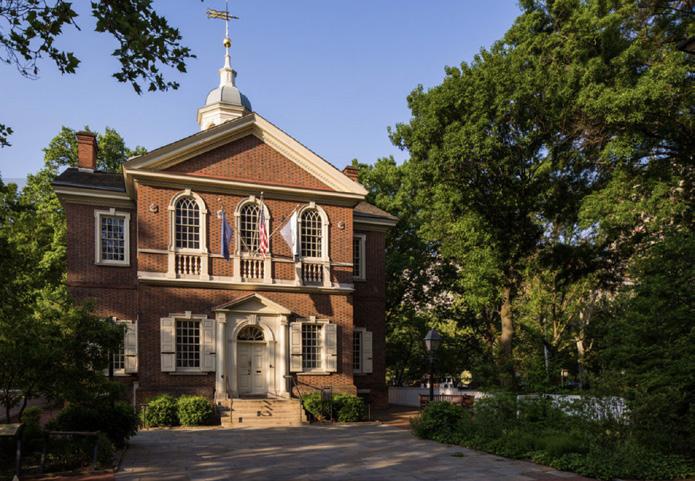
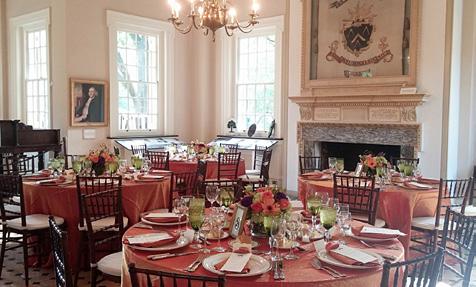
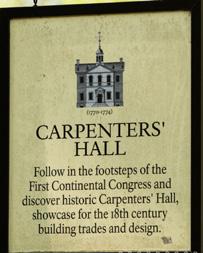
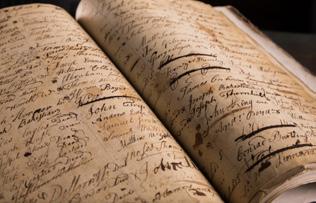
A Night of Geology and American History
Wednesday, September 11, 2024
Carpenter’s Hall $125/person
Join us for a fun and inspirational evening in this beautiful historic building with a speaker on geologic history and American history. Hosted bar and dinner included. Carpenters’ Hall is a treasure in historic Philadelphia. It hosted the First Continental Congress in 1774 and was home to Franklin’s Library Company, the American Philosophical Society, and the First and Second Banks of the United States. The year 2024 rings in the 300th year of The Carpenters’ Company of the City and County of Philadelphia. It likewise signals the 250th anniversary of Carpenters’ Hall and the First Continental Congress.
Tell me and I forget. Teach me and I remember. Involve me and I learn.
—Benjamin Franklin ●
Few will have the greatness to bend history itself; but each of us can work to change a small portion of events, and in the total of all those acts will be written the history of this generation.
—Robert Kennedy

Tuesday, September 10, 8:00–10:00pm on the Moshulu Tall Ship Free for full and student registrations
This social event is a great way to start your week in Philadelphia. Take the opportunity to meet many of our Student Members in the environmental and engineering geology sciences while you enjoy free appetizers and a free drink ticket! Just a short walk from the hotel, this event is an excellent opportunity to recruit future Chapter members, meet potential employees, find a student to mentor, and see the future of AEG. We encourage young professionals to join the event and welcome experienced professionals who are “young at heart!”
Thursday, September 12, 12:00–1:30pm
$55 per person
Join us for this networking event that focuses on diversity and inclusion issues in the industry and offers an open forum for discussion and education. Everyone is welcome!
Thursday, September 12, 7:00–10:00pm $125 per person
This is a well-attended, high-profile event at which the Association’s major awards are given. Join us for a gourmet dinner, fine wine, and a chance to visit with friends—both old and new. Semiformal attire is recommended, though not required.
Friday, September 13, 3:00–5:00pm Free with all registration types. The Awards Ceremony and Corporate Business Meeting is a time for Association officers, board members, and committee members to participate, report on their activities, witness the installation of new officers, the transition of the outgoing and incoming presidents, and the presentation of some of the AEG awards.
Annual Meeting Mentor Program
The Student and Young Professional Support Committee is developing a mentor program to pair professionals that plan to attend the 2024 Annual Meeting with interested student attendees. We hope mentors can provide advice and support both before and during the Annual Meeting to make the meeting more relaxing, enjoyable, and beneficial for students. Students interested in being paired with a mentor will identify themselves when they register for the meeting and will be provided with the contact information of a professional who has volunteered to be a mentor. The student can then contact the professional with questions ranging from “What should I wear?” to “Could we meet during the Ice Breaker?”
Student/Professional Networking Reception
Tuesday, September 10, 5:15–6:15 pm
Be sure to attend this fun and relaxed event as it is the perfect place for you to make new friends and meet future employers and/or employees! You don’t want to miss it! Be sure to sign up on your registration form.
Volunteer at the Meeting
8 hours of time equals a complimentary registration—a $95–$125 value! Duties can include any of the following: Control the lights and speaker timer for the technical sessions, assist speakers with uploading their presentations onto the session laptops during the Speaker/ Moderator Breakfast, and stuff registration packets preconference.
Interested students should contact Heather Clark for details, heather@ aegweb.org.
Full Registration
AEG Member $625.00
Nonmember $750.00
Student $95.00
Special rates for speakers!
Speaker Full: Member $575.00
Speaker Full: Nonmember $700.00
Speaker One Day: Member $325.00
Speaker One Day: Nonmember $400.00
Events included with full and student registrations:
Student/Professional Networking Reception
Icebreaker Reception with drink ticket and appetizers
Young at Heart Social Event
Exhibitor Hosted Luncheon
Poster Session Reception with drink ticket
Opening General Session
All Technical Sessions and Symposia
Exhibit Hall with All-Day Coffee and Technical Session Breaks
Closing Reception with drink ticket
One-Day Registration
Member $350.00
Nonmember $450.00
Guest Registration
Must be linked to a full or one-day registration (per adult)
$175.00
Included with Guest Registration:
Icebreaker Reception with drink ticket and appetizers
Guest Get Together on Wednesday morning
Exhibit Hall with All-Day Coffee
Optional Events for Additional Fees (per person)
Special Event: A Night of Geology and American History at Carpenter Hall: $125
AEG Inclusion Luncheon: $55
Annual Banquet: $125
Field Courses vary by event. Visit the Field Course, Guest, and Special Event pages for details and fees
Virtual Technical Session Day: Member $100, Nonmember
$150.00 (free for full and student meeting registrants)
All cancellations and requests for refunds must be made in writing to the Annual Meeting Committee Chair(s). Verbal requests will not be accepted. Refunds may be issued 4–6 weeks after the close of the meeting.
For cancellations received at least 30 days prior to the start of the Annual Meeting:
• a $75 processing fee will be applied for cancellation of a full Professional registration
• a $45 processing fee will be applied for cancellation of a one-day Professional registration
• a $40 processing fee or the cost of the activity, whichever is less, will be applied for cancellation of each Annual Meeting activity
Events and Field Courses
• a 50% refund will be issued for cancellations received between 15 and 30 days prior to the start of the Annual Meeting. No refunds will be issued within 15 days of the start of the Annual Meeting. Special consideration will be given for verifiable personal and medical emergencies.

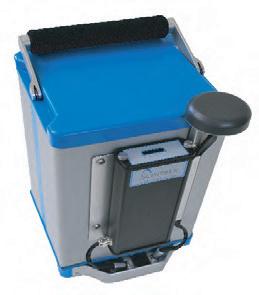
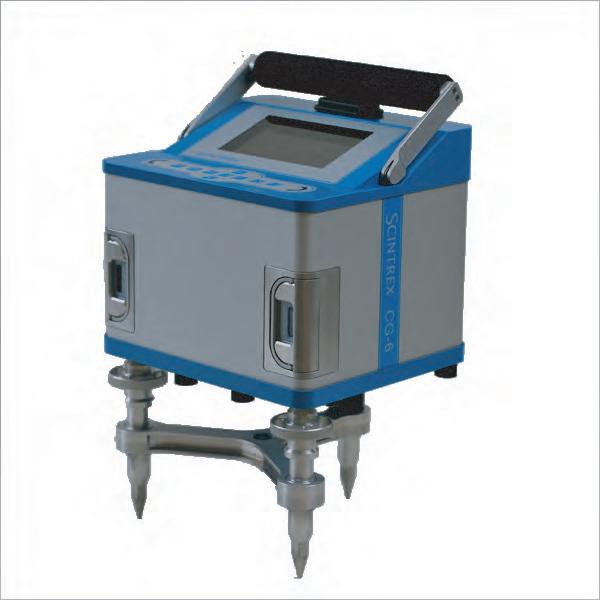
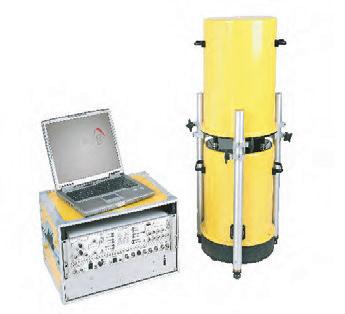
Minda Moe, Co-Chair
For over 40 years, the Annual Meeting has included a meal focused on networking and support of people seeking greater representation in AEG. The Women in AEG Breakfast/Luncheon for women and allies at the Annual Meeting was a great opportunity for many women to make connections with their peers and friendships for life within the organization. In 2021, the Women in AEG meal evolved into the Inclusion Luncheon.
In 2023, the Inclusion Luncheon activity centered around using Jamboard, a virtual collaborative whiteboard, to allow everyone to contribute their thoughts on AEG’s current direction and ideas on how we can make AEG more inclusive. Attendees praised the Executive Council and other leaders in AEG for their continued support for the efforts of diversity, equity, and inclusion and for their continued support of the Inclusion Luncheon. Other organization-based ideas included having more information about operational committees during new member enrollment, sending polls to the AEG membership to reach out to those who do not regularly attend the Annual Meetings or participate in committees, and making contact information easier to find on the AEG website to remove barriers to communication.
available on the AEG website, and the application deadline each year is July 31. Please pass these opportunities to others in your network to ensure they are utilized every year.
On the same general bent as increased support for students, attendees promoted additional outreach to lowerincome and traditionally underserved communities. Everyone in AEG has the opportunity to use their personal networks to reach out to their neighbors, such as universities and colleges with first-generation students who may not have had exposure to the geosciences. A few attendees proposed that AEG partner with other organizations that are also promoting diversity in the field. Specific organizations called out include the Society of Women Engineers, the American Indian Science and Engineering Society, and the Society of the Advancement of Chicanos/Hispanics and Native Americans in Science.
Everyone in AEG has opportunities to use their personal networks to reach out to first-generation college students, who may not have had exposure to the geosciences.
A lot of ideas centered around support for students, such as offering scholarships, free tickets for the Inclusion Lucheon, and travel grants for the Annual Meeting. Some of these resources are already available, but opportunities exist to expand and better advertise them to make that support more accessible. The AEG Foundation offers a variety of scholarships and grants. The scholarship application deadline is January 15 every year, while grant applications are accepted and considered year-round. Some of the scholarships, such as the Susan Steele Weir Scholarship and the Diversity Scholarship created by Phillis and Richard Steckel, have specifically identity-based criteria, while other scholarships are geared to those from specific regions or geoscience disciplines. The current grants support K–14 educators, AEG Student Chapters, and junior high and high school STEM teachers teaching traditionally underrepresented demographics in geoscience. The Student & Young Professional Support Committee coordinates and approves Annual Meeting travel grants for Student, Early Career, and Teacher Members of AEG. The travel grant application is
Attendees of last year’s luncheon also spent some time discussing how local chapters can work on their own inclusivity. Bringing in a diverse roster of speakers can make a huge difference in how members and visitors perceive our organization. Chapters can consider actions such as rotating their meeting locations around their territory to make events easier to attend for those constrained by work or school hours, transit options, or finances. They can also adopt local Scout dens or other groups that support outdoors education, as AEG members have the knowledge and skills to help students earn merit badges and the funding to support trips (e.g., camping, museums) that local groups may not have the funding to execute on their own. Chapter leadership can also seek out leadership and inclusion training for themselves and local members to enhance their skills and help navigate situations that they may not have encountered in their professional careers.
If you are interested in attending this year’s Inclusion Luncheon, you can add it to your Annual Meeting registration for $55. Financial assistance is available: please reach out to Meeting Manager Heather Clark at heather@aegweb. org. If you are unable to attend this year’s Annual Meeting in person but have ideas of your own, the Diversity, Equity, and Inclusion Committee (DEIC) meets monthly, typically on the third Thursday. Please email suggestions or requests to attend committee meetings to the DEIC co-chairs, Minda Moe (Minda.Moe@arcadis.com) and Matt Buche (Matthew. Buche@water.ca.gov).
Visty Dalal, Co-chair
AEG’s Membership Committee (MemCom) was formed in September 2023 at the Portland Annual Meeting. MemCom heavily depends on membership and other data from AEG’s management company, as well as from AEG’s Meeting Manager, Heather Clark. The data are needed to derive statistics regarding recruitment and retention of new and existing members. Therefore, a hiatus has occurred in acquiring some of the important data for the past six months, due to the vacancy of the AEG management company. This setback didn’t stop MemCom from creatively seeking other relevant opportunities to push its agenda. MemCom members have initiated and pursued several activities to make progress in their goals to increase and retain members.
AEG’s Baltimore-Washington-Harrisburg Chapter hosted President Sarah Kalika at its March 2024 monthly meeting, where Sarah gave an interesting talk on “Naturally Occurring Asbestos,” which she has been working on professionally for more than 15 years. Before the technical discussions, she provided a summary of activities that AEG has been involved in, including the formulation of MemCom as a new operating committee. She invited Visty Dalal, MemCom Co-chair, to provide a brief review of the work that MemCom members have been involved in since its inception. The Chapter Members received the newly created AEG Membership Brochure that MemCom helped in developing along with the past AEG Manager.
AEG’s Chapter Support Committee (CSC) Chair, Curt Schmidt, kindly invited Visty Dalal to speak to the Regional Directors and Chapter Chairs at the March meeting. Visty introduced MemCom to the CSC members and provided a litany of things that MemCom has been actively involved in since its formation in September 2023. At MemCom’s request for new committee members, some CSC members were happy to send names of contacts that they thought would be interested.
AEG’s New York-Philadelphia (NY-P) Chapter Chair, Loren Lasky, invited Visty Dalal to speak on the “History, Geology, and Construction of the Conowingo Dam, Maryland” at the Chapter’s monthly meeting at the Clarion Hotel, in Somerset, NJ. The impetus of the meeting was not only to generate interest in the NY-P Members in dam-related seminars, but also to push the need for attendance at the Philadelphia Annual Meeting in September. Visty took the opportunity to precede his technical presentation with a brief introduction of MemCom and its formation and past and future activities, as well as the benefits of AEG membership. The new AEG Membership Brochure was also shared with the members, which generated some discussion about different types of
proposed membership categories. All in all, it was a very productive meeting for all attendees, including a couple of students from Rutgers University who came to the meeting with their resumes seeking employment opportunities. One got an interview call at the meeting!
MemCom Co-Chair, Visty Dalal, was invited to attend AEG’s Mid-Year Board Meeting (MYBM) in Aurora, CO, from April 27 to 28, 2024. Martha Whitney also attended the meeting virtually in her dual role as MemCom Committee Member and Director of AEG’s International Region. MemCom provided the board members with information on all the activities it has been involved in since September 2023 and its plans for increasing and retaining members. The presentation also included a list of recommendations for creating new membership categories and AEG promotional materials such as magnets, pamphlets, and banners. Visty appreciated the invitation by President Sarah Kalika to attend the MYBM, as it was an educational and informative process.
To support our goal of retaining AEG Members, MemCom has been working on reviving dormant AEG Chapters. During conversations at different meetings, it became evident that the New England Chapter and the Southeast Chapter may need some encouragement and assistance to get back on their feet and become active. Many members in both these chapters/regions are interested in bringing back the activities that once were present in them. MemCom has made initial contacts with respective chapters/region members to determine their interest in creating new or resurrecting dormant chapters. MemCom Co-chair Rick Kolb is working with members of the Atlanta Chapter to restart it and find new ways to bring enthusiasm to this chapter. MemCom member Curt Schmidt has been working with several individuals in the New England Chapter. We hope Rick and Curt are successful in invigorating these chapters.
MemCom understands that interest exists in creating a Florida Chapter with help from AEG if possible. Visty has volunteered to work on this to garner more support. At a recent MemCom monthly meeting, AEG Vice President Renee Wawczak agreed to work with Deborah Greene to start a chapter in New Mexico where several members have shown interest in having one. This is great news, and we wish Renee all the best in this venture! Agreed that this is a slow and deliberate process, but one that MemCom is very interested in facilitating as it satisfies both our goals of retaining and recruiting members. MemCom is diligently striving to ensure that the different chapters are back in force and working together to share their professional experience and information with each other.
Iam Folasayo Oladeni. I hail from Iseyin, a town in the heart of Oyo State, in the southwestern region of Nigeria. I am on the cusp of transitioning into my third year of university studies, having successfully completed my second year at Obafemi Awolowo University (OAU) Ile-Ife, Osun State, where I am currently studying for my bachelor’s degree in applied geophysics.
A twist of fate during admission exercise steered me towards this fascinating field of study. What began as an unforeseen shift, however, quickly ignited a newfound passion and revealed the power of dreams that lie just beyond my expectations, transitioning an unforeseen challenge into an adventure of personal growth and exploration. Through this transformative journey, I stand as a shining example of adaptability, resilience, and the belief that the universe aligns with a purpose greater than I can imagine. My fascination with the geoscience propels me to explore the diverse areas in this captivating field. With each new discovery, I am drawn further into Earth’s secrets, eager to find the area that ignites my passion and resonates with my aspirations.
A transformative experience that significantly shaped my educational and career aspirations was a three-day fieldwork exercise I undertook as a budding geology student. My colleagues and I visited areas rich in geological diversity, allowing us to explore various sedimentary, igneous, and metamorphic rock formations. I applied my theoretical knowledge to analyze and interpret the geological structures and features I encountered. This hands-on experience not only deepened my understanding of the complex processes that shaped our planet but also cultivated my analytical and problem-solving skills. Witnessing firsthand the beauty and complexity of geological formations instilled in me a sense of awe and responsibility toward our planet’s resources.
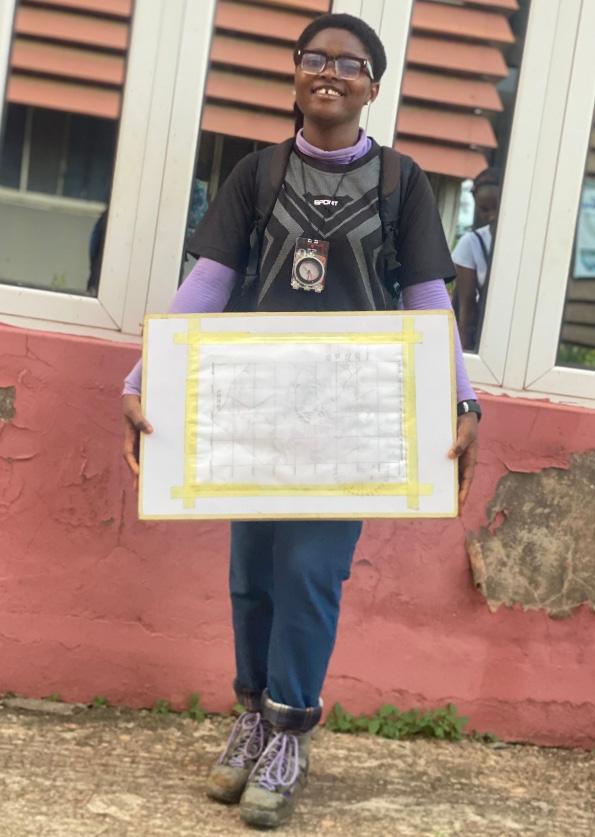
This exercise further fueled my passion and taught me the importance of fieldwork in understanding geological phenomena sparking my determination to pursue a career that combines hands-on exploration with scientific research.
In one of my recent on-campus field mapping exercises, some of my course mates and I ventured back to the outcrops to update our field notes as instructed by our lecturers. Engrossed in our work, we did not immediately notice the elderly gentleman, his hair a crown of white, approaching us. To our surprise, we realized he was a former head of the Geology Department, visiting the University from Uganda. Although we recognized him from a previous visit to our class, we were astonished and thrilled to see him. He shared his insights with us with a contagious enthusiasm, and we eagerly followed him as he guided us to the hidden corners of areas we had previously overlooked. With patience, he corrected some of our misconceptions, imparting valuable lessons and revealing extensions of the outcrop we had missed. This coincidental encounter was a turning point for me, deepening my understanding and appreciation of the subject.
I find myself awash in profound appreciation as I acknowledge the exceptional honor granted by AEG of being asked to contribute a written piece. I am reminded of the importance of community, support, and dedication in our shared pursuit of advancing engineering geology. I am beyond grateful to be a part of this distinguished community and eagerly anticipate the continued growth and success that lie ahead. The prospect of internships, student mentorships, attending conferences, and pursuing a master’s degree without financial constraints fills my heart with hope and determination. These life-changing opportunities would allow me to expand my knowledge and make meaningful contributions to the world of geology.
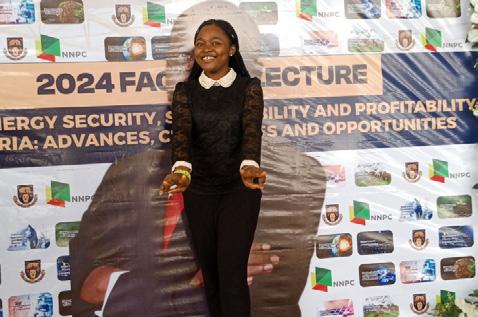

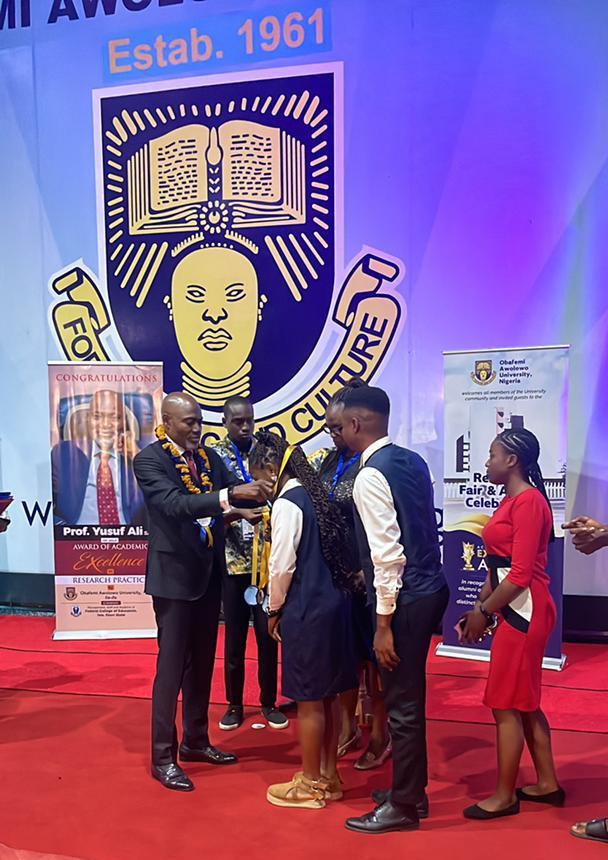
August 20, 1927–May 17, 2024
RRobert (Bob) passed away peacefully at the Golden Pond Retirement Community in Golden, CO, on May 17, 2024. He was born to Helen (Sonnenberg) Schuster and Rudolph “Dude” Schuster on August 29, 1927, in a one-bedroom frame house in the small town of Chehalis, WA, and was soon followed by his sisters Marilyn (Mary Jo) and Carole. As a Boy Scout, he grew to love the Cascade Mountains, where he camped, hiked, and learned mountaineering skills.
Bob graduated from Chehalis High School with honors in 1945. He was awarded a BS in geology from Washington State College in 1949 and an MS in geology at The Ohio State University in 1951. He spent the summers of 1951 and 1952 working for the American Geographical Society’s Juneau Icefield Research Project, studying Taku Glacier. Upon graduation, he was hired by a U.S. Army–run arctic research lab based in Chicago.
Returning to Chicago after the construction of a military runway in Fairbanks, Bob caught a Northwest Orient flight, where he met a flight attendant—his future wife—Patricia McCanney. Bob and Pat married in February 1955 in Seattle. Knowing that arctic work was fairly dangerous, Bob opted to return to college at Purdue University in West Lafayette, IN.
Over the next 5 years, Bob earned an MS and PhD in civil engineering and welcomed four children: Anne, Kathleen, Mark, and Richard. Upon graduation, he was offered a position as an associate professor in civil engineering at the University of Colorado Boulder; the family moved there in 1960.
In 1965, Bob received a fellowship at the University of London’s famed Imperial College of Science & Technology. The family traveled to London on Cunard’s Queen Elizabeth and settled in a late-Victorian home in Keston, Kent, for the year. Bob received a postgraduate degree (equivalent to an MS) in soil mechanics from the College. The family returned stateside aboard Cunard’s Carmania.
In 1968, Bob became a full professor at the University of Colorado, but decided he wanted a smaller school and accepted the chairmanship of the Department of Civil Engineering at the University of Idaho in Moscow. In 1974, Bob was back at London’s Imperial College as a faculty member funded by NATO. That August, he accepted an administrative position at USGS at the Denver Federal Center and relocated to Golden, CO. He stepped down 5 years later to focus on field work. Over the following 30+ years, Bob became one of the world’s foremost experts on geological hazards and their mitigation. He participated in investigating
the failure of Teton Dam (ID) and the repercussions from the eruption of Mount St. Helens (WA). He was appointed to the Panama Canal Commission advisory panel on geologic hazards, an appointment that lasted 22 years. As a member of a National Research Council committee, Bob studied the safety of coal-waste dams at mines in the Appalachian Mountains. Bob was a consultant for the United Nations and local governments on geohazard problems in the Soviet Union, mostly during the Cold War. He went on to study geologic hazards in Tajikistan, Kazakhstan, and Kyrgyzstan. In Central and South America, he conducted field studies in 10 countries, mainly in the Andes and tributaries of the Amazon. He spent years as a researcher in the Far East, Australia, and New Zealand. Bob retired from USGS in 1995 and became an international consultant based in the U.S.
In addition to his field work, Bob lectured around the world. He was a senior Fulbright at Macquarie University in Sydney, speaking at universities throughout Australia. In North America, Bob was selected by AEG to present the annual Jahns Distinguished Lecture Series to geology and civil engineering students at 33 universities. And, funded by the Japanese government and professional societies, Bob traveled by train to universities from Kyushu to Hokkaido.
In 2007, Bob became the first recipient of the eponymous Schuster Medal, created by the Canadian Geotechnical Society (CGS) and AEG to honor “A North American geologist or geotechnical engineer who has practiced exceptional study, research, and/or amelioration of geologic hazards (landslides, earthquakes, volcanic eruptions).” Bob enjoyed traveling to present the Medal to distinguished colleagues in Canada and the U.S.
Bob was a gifted speaker, prolific writer (he authored/ coauthored or edited 300+ texts, papers, and abstracts), voracious reader, history buff, and lover of the outdoors.
We are blessed to have shared the years and built the memories we have with him and will miss his presence in our lives tremendously. The family would like to extend special thanks to all of the caregivers and medical and hospice personnel who made his final years active and enjoyable and provided peace and dignity to his passing. The many friends he made throughout the world and in his years at Golden Pond were very special to him. He is survived by his sister Carole, four children, five grandchildren, seven great-grandchildren, and their respective spouses. In lieu of flowers, please make memorial donations to American Alpine Club (Golden, CO). Source: https://www.denverpost.com/obituaries/robertschuster-golden-co/
April 26, 1970–May 26, 2024
Submitted by Anna Saindon
On May 26, 2024, AEG lost one of its most loyal and dedicated volunteers and friends. Duane joined AEG in 1996 and became active at the Section level soon after, including serving as a Field Trip Leader and preparing Field Trip Guidebooks. Duane was the Field Trip Coordinator for the 2001 AEG Annual Meeting, and he served as an officer of the St. Louis Section from 1999 to 2005.
Duane became active at the Association level in 2003, when he became Chair of the St. Louis Section and began serving on the AEG Board of Directors. Duane was always prepared and engaged at the Board Meetings, of which he attended more than two dozen because of his tenures as St. Louis Section Chair, Co-Chair of the Governance Committee, and on the Executive Council (EC) and Strategic Planning Committee. For the last several years, Duane served on the AEG Foundation Board and as Foundation President from 2023 to 2024. He received the AEG Douglas R. Piteau Outstanding Young Member Award (2004) and Floyd T. Johnston Service Award (2014). Listed below are the numerous officer, liaison, and committee leader positions he filled for AEG, in addition to a summary of his education, professional experience, and service to the profession in roles outside of AEG.
However, listing Duane’s positions, though lengthy, only tells part of the story. Have you noticed how many times the word “serve” was used in the opening paragraphs? Duane’s service to the Association, and to the profession, was exemplary. He was the person so many AEG volunteers called when they needed to brainstorm an idea, have a document reviewed, solve a problem, or lead a committee. Duane was the person who stepped in to steer an Annual Meeting when a planning committee was off course. Duane did the research when state regulations changed and AEG’s organizational status changed because of it. He was the one who drafted the required wording and finalized it with the attorney. Duane negotiated and renegotiated contracts. He took the phone calls from disgruntled members when something went wrong and gave the credit to someone else when something went right. Duane dedicated countless hours to AEG, often working the equivalent of two full-time jobs, one at Geotechnology/UES and one at AEG. He recruited new AEG members by being a welcoming presence, and he encouraged their participation by the example he set. Duane also motivated and inspired the old guard AEG volunteers. He was always appreciative of others’ efforts, and self-effacing about his own. Duane was a quiet man whose actions spoke louder than his words, and by word and deed he was a stalwart leader of the Association. More
than anything, Duane was a friend, a listening ear, and quick to make us laugh. He will be greatly missed by AEG and by those of us left to carry his memory forward.
Professional Experience:
Duane received his BS in geology from the University of Illinois Urbana-Champaign. He was a registered professional geologist in Missouri and Illinois. He spent 29 years with Geotechnology, Inc., in increasingly responsible positions, starting as a driller’s helper, progressing to project geologist and project manager, then environmental group manager, St. Louis branch manager, and operations manager over four Geotechnology offices throughout the Midwest. He assisted with the transition when Geotechnology was acquired by UES. He recently retired from UES.
Service to the Profession:
• Chartered and Chaired the Missouri Geologists’ Consortium (2013–2024)
• Organized Student Subsurface Exploration Workshops (2009 and 2011)
• Volunteered on science projects and field trips for the Cub Scouts and Boy Scouts
Service to the Association:
• Board member (2020–2024) and President (2023–2024) of the AEG Foundation (AEGF)
• Led the launch and implementation of AEG’s Needs Assessment (2012–2014)
• Co-authored the grant application to the AEGF for the Needs Assessment (2012)
• Co-chaired the Strategic Planning Committee (Spring 2012–Jan 2014)
• Chaired/Co-chaired the Advertising/Sponsorship/Exhibitor Committee (2011–2014)
• Served on the Ad-Hoc Association Manager Selection Committee (2012)
• Served as the AEG liaison to the Geoprofessional Foundation (2011–2013)
• Led and/or served on the EC Nominations Committee (2011–2013)
• Served on the Terzaghi Mentor Award Selection Committee (2011–2013)
• Served on the Jahns Distinguished Lecturer Selection Committee (2011–2012)
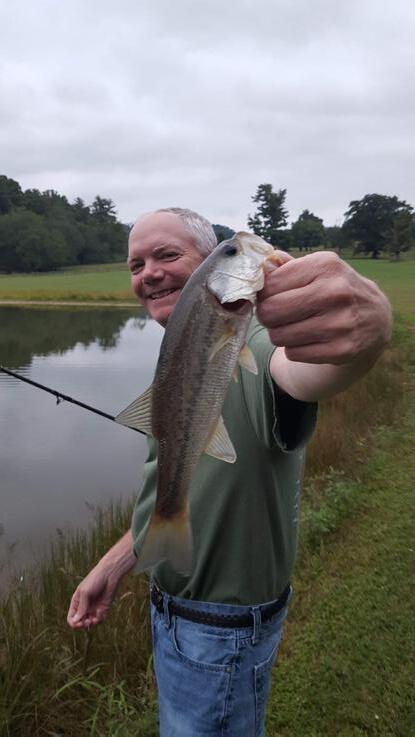

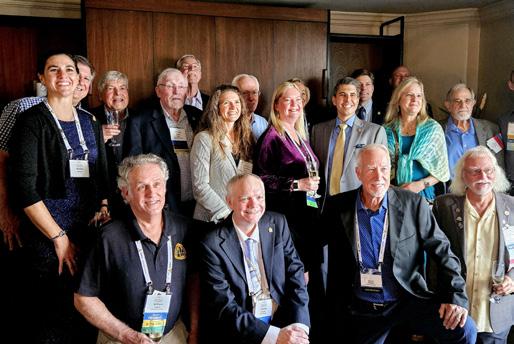
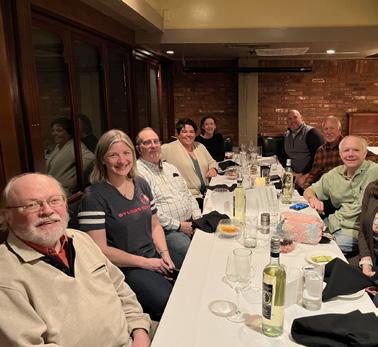
• Served on the Honorary Member Selection Committee (2011–2012)
• AEG President (Sept 2009–Sept 2010)
• Member of AEG’s Executive Council (Sept 2006–Sept 2011)
• Served as EC liaison to Annual Meeting Planning Committees (2010–2011)
• Drafted the Memorandum of Understanding utilized by AEG and the Annual Meeting Planning Committees (2010)
• Worked with the Governance Committee and Attorney to rewrite the AEG Bylaws to conform with new CA laws (2010)
• Sponsored events and field trips for numerous Annual Meetings
• Drafted the charter for the Terzaghi Mentor Award (2008)
• Co-chaired the Governance Committee (2004–2006)
• Served on the Section/Chapter Support Committee (2004–2005)
• Served on the AEG Board of Directors (2003–2005)
• Chaired the AEG St. Louis Section (2003–2005)
• Chair of Field Trips, Annual Meeting, St. Louis, MO (2001)
• Officer of the AEG St. Louis Section (1999–2005)


From Daren Kreuger, Duane’s brother:
Duane talked about AEG a lot. Almost as much as fishing. He really loved the whole organization. My guess is that his love for this kind of activity was sown into him as a child and then a young man. For example, the Boy Scouts had a huge impact on him (both of us really), as it relates to being outdoors, respecting the environment, working toward merit badges and rank progressions. We went on many trips with the Scouts, including the Philmont High Adventure Base in Cimarron, NM. He loved it so much he made a scrapbook of it that I now have and had long forgot about. Our grandparents took us to Mammoth Cave in Kentucky while we were mid-teens. But most importantly, would have been his involvement with the Geology Club in high school. Mr. Turley ran that club and was also a math professor. The trips they took, and the stories Duane told about those trips, firmly placed him on the geologist path. This was further enhanced of course as he pursued his geology degree at U of I, as he then got to do even more of this. He used to talk about how they would sneak in alcohol on these trips and drink with the professor. And how they would then cook bacon on a cast iron skillet while watching the sun rise over the mountains. He most enjoyed taking trips to see firsthand geology at work in different parts of the country. So it was only natural that he joined organizations such as AEG and the Missouri Geologists Consortium.
August 13, 1944–June 9, 2024
Submitted by linda hadley
RRalph G. Mock was born in Prescott, AZ, to Kemble (Roy) and Gilbert Mock. Ralph’s early years were spent in small mining towns in Nevada, where his father worked as a miner and his mother often taught school. He was an only child and following the death of his father in 1956, he and his mother moved to Bishop, CA, where he discovered downhill skiing at Mammoth Mountain. In high school, his track coach and civics teacher, Dave Sharp, introduced him to backcountry skiing and mountaineering in the nearby Sierra Nevada mountains. After graduating, he left Bishop to pursue a geology major at the Mackay School of Mines (University of Nevada, Reno), earning a BS in 1967. He then started on his MS and met his lifelong partner, Linda Hadley, who was an undergraduate student at Mackay. In 1969 Ralph’s student deferment was revoked, and he was off to an unplanned sabbatical in Vietnam. He served in the 101st Airborne Division as a fire direction controller for the 105-mm howitzer cannons. Most of his tour was served on firebase Veghel in the A Shau Valley between 1969 and 1970. After returning from Vietnam, he completed his MS in early 1972. As a celebration to commemorate his return from Vietnam and graduation, he and two friends skied roughly 200 miles along the Sierra Nevada crest from Mt. Whitney to Bridgeport, CA, over the course of 49 days in the spring of 1972.
Ralph then joined Linda in Golden, CO, where she was working on her MS in geophysics at the Colorado School of Mines. Ralph was hired by Chen & Associates Soil and Foundation Engineers as their primary geologist. He became well known in the Denver geological community and was active in AEG throughout the 70s, 80s, and 90s, serving as president of the Rocky Mountain Section in 1980. He worked on a wide range of projects throughout Colorado, Wyoming, and Utah, including dams, pipelines, planned unit developments, and many ski area developments. After the sale of the company in 1987 and restructuring, he remained with Chen-Northern until 1993, when he rejoined two of the original Chen engineers at their company Hepworth Pawlak Geotechnical (H-P Geotech). He continued working as their senior geologist and served on many Denver-area engineering committees and participated in numerous symposiums until retiring in 2018. His contributions to the engineering geology community, particularly the Colorado Geological Survey, included collaborations on special mapping projects, such as sinkholes and subsidence in the Eagle Valley Evaporite, where he coauthored several papers and field trip guidebooks, including a paper in the GSA Special Papers No. 355 collection on Late Cenozoic evaporite tectonism
and volcanism in west-central CO. He was recognized for his expertise with collapsible soils in western CO, swelling soils in the Denver metro area, mine reclamation, and earthquake hazards. He was committed to excellence in mapping geohazards and finding ways to mitigate their effects on engineering structures. His deep understanding of geomorphology (landforms) and hydrology gave him unusual insight into identifying geologic hazards and working with project engineers to mitigate their effects.
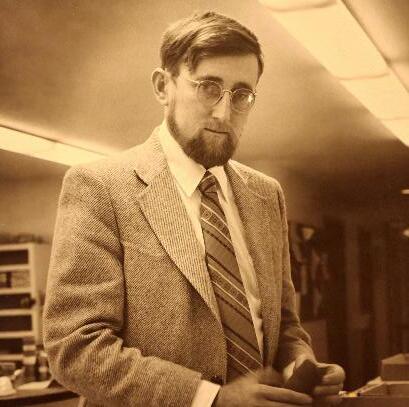
In their early years, Ralph and Linda enjoyed square dancing and honkytonking during the week and spent most weekends in the mountains. Summer weekends were spent hiking the high peaks in the Front Range and winter weekends were spent telemark skiing in the backcountry, always followed by a tailgate beer or two. Longer weekends were spent climbing many of Colorado’s fourteeners or skiing into one of the many 10th Mountain huts in the winter with friends and family. Extended trips included the occasional jeep/camping/beer-drinking/firedancing, and/or skiing trip with the many lifelong friends they made while working at Chen and H-P Geotech. Ralph was also fascinated by Western history, from the early exploration of the West by fur trappers to the Indian wars, the Civil War, and both world wars. Vacations were often spent driving thousands of miles of backroads to retrace immigrant trails and visit the many forts and battlefields throughout the West. In their later years, they swapped their hiking boots for a Jeep Rubicon and continued to explore and enjoy the landforms of Moab, Canyonlands, the Great Basin, and the Rocky Mountains. During the past decade or so, Ralph and Linda expanded their travels to see in person the major tectonic plate boundaries throughout the world. Ralph’s lifelong passion was beer, especially craft-brewed IPAs. The revolution in craft brewing and the evolution of the sidecut Telemark ski were the two things that he was eternally thankful to have witnessed and enjoyed in his lifetime.
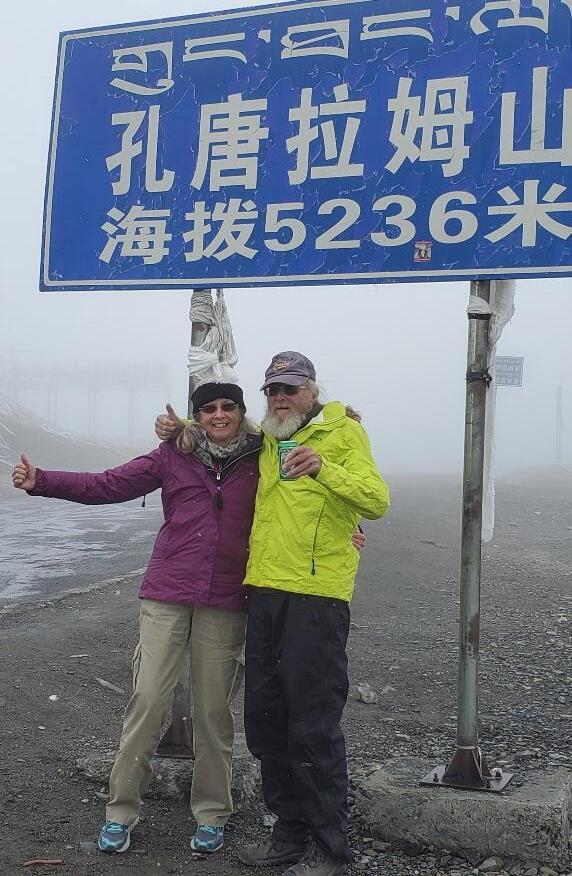
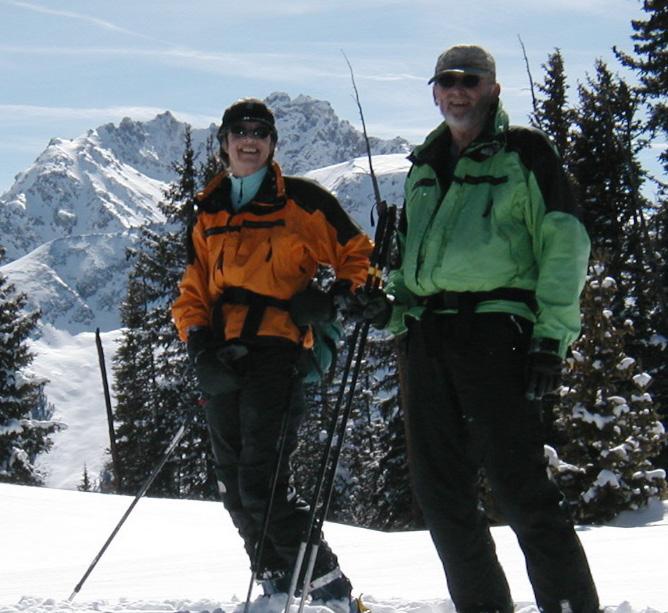
EAI, Inc.
Robert Carvalho robc@eaienviro.com www.eaienviro.com
Geobrugg
Tim Shevlin Tim.Shevlin@geobrugg.com www.geobrugg.com


Maccaferri North America
Mike Koutsourais m.koutsourais@maccaferri.com www.maccaferri.com/us
Scintrex
Bill Male bmale@scintrexltd.com https://scintrexltd.com

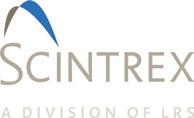
University of Pennsylvania lps@sas.upenn.edu https://www.lps.upenn.edu /hs/msgo

BGC Engineering, Inc
Tony Monasterio tmonasterio@bgcengineering.ca www.bgcengineering.com
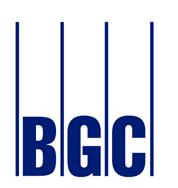
Southwest Geophysical Consulting, LLC
Dave Decker, dave@swgeophys.com https://swgeophys.com/
Sarah Kalika, skalika@diablogeo.com diablogeo.com
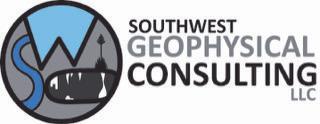
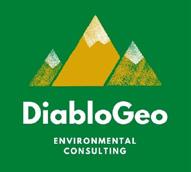
Earth Consultants International
Eldon Gath gath@earthconsultants.com www.earthconsultants.com




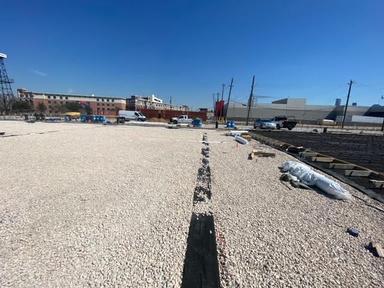
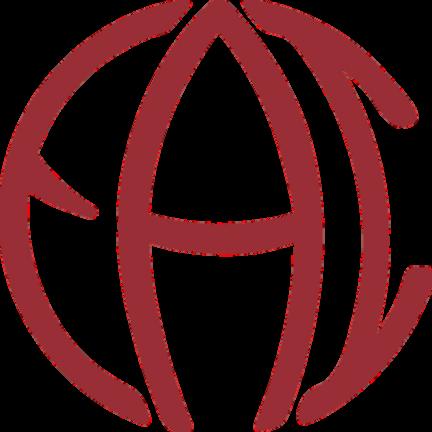
Loren Lasky, Chapter Chair
The New York-Philadelphia Chapter (NYP) met for monthly dinner meetings at the Clarion Somerset Hotel in central New Jersey from January through June 2024.
Longtime NYP Member John Dougherty (CDM Smith) packed the house with his January 25, 2024, presentation on Environmental Stratigraphic Sequencing. Attending for the first time was new geology professor from Rowan University, Dr. Lily Pfeifer-Johnson, along with a van full of students. Dr. Pfeifer was so impressed with AEG, she started a Student Chapter at Rowan, and volunteered to lead the Annual Meeting Field Trip to the Edelman Fossil Park in September.
In February, Jeffrey Andrilenas (TBLS Group) opened our eyes to the extensive Airborne Distribution of PFAS chemicals, with a few pointed examples in our own area.
AEG President Sarah Kalika (Diablo Environmental) visited on March 14, 2024. She updated us on AEG business and gave a technical talk explaining how elevated concentrations of chromium and nickel can serve as indicators for the presence of chrysotile asbestos in serpentine rocks. She also managed to fit in a quick trip to York College on Long Island and got a royal reception from Professor Naz Khandaker and his students.
On April 3, 2024, we joined hundreds of our professional colleagues at the New Jersey Site Remediation Conference. We gave away samples of Franklinite from the New Jersey Sterling Hill Zinc Mine as swag. We represented AEG as the geologists among all the remediation practitioners, rolling out our new slogan: AEG—the Rock Stars of Science!
Our neighbor from another Chapter, Dr. Visty Dalal (Maryland Dept of the Environment, Dam Safety Program) of the Baltimore-Washington-Harrisburg Chapter (BWH), drove up May 30th, 2024, and presented a preview of the Field Trip to the Conowingo Dam that he will be leading at the Philadelphia Annual Meeting in September. His video of the “fish elevator” was very amusing.
Lastly, we added an extra talk in June, so our resident tectonics expert, Dr. Greg Herman (NJGS, retired) could unravel the dynamics of the recent New Jersey earthquakes for us. His talk was well attended by many notable scientists, both in-person and remotely. His theories tied the recent quakes to his ever-evolving theories of impact tectonics. Finally, we gave all attendees a commemorative enamel pin crafted to highlight the upcoming AEG conference in Philly as a souvenir.
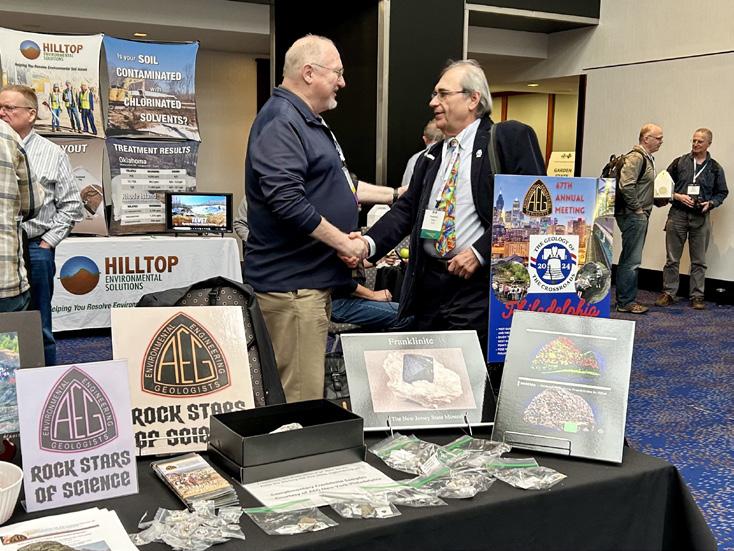
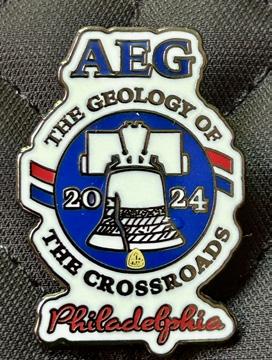
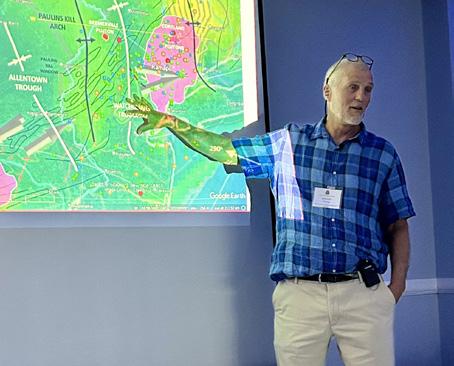
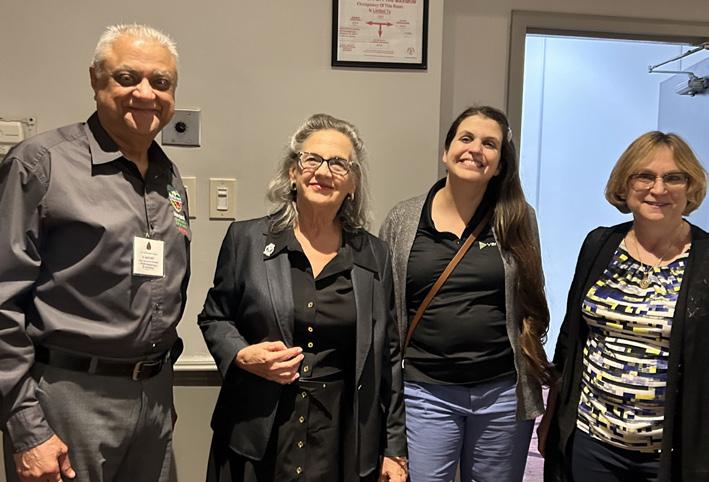
Jim Hamel, Honorary Member and News Wrangler
Because of the geographic dispersion of our members, our Chapter has several joint meetings each year with the Pittsburgh Geological Society (PGS) and the ASCE Pittsburgh Section Geo-Institute (G-I).
On February 22, in a joint meeting with the G-I at the Engineers Society of Western Pennsylvania in Pittsburgh, Dr. Andrew Bunger of the Department of Civil and Environmental Engineering at the University of Pittsburgh presented “Measurement and Modeling of Injection and Flowback for Subsurface Pumped Energy Storage in Horizontal, FluidFilled Lenses.” A demonstration project in the Western Canadian Sedimentary Basin, Alberta, showed the feasibility of generating a horizontal lens with simple geometry and direct connection to a vertical borehole, thereby advancing subsurface efficient pumped energy storage for renewable, but intermittent, energy resources.
The 20th Annual Student Night, an annual student research showcase, and a joint meeting with PGS and the G-I, was held on April 17 at Gaetano’s Banquet Center in Pittsburgh. Each of the three societies selected a student paper for oral presentation and a monetary prize. Other students gave poster presentations before the dinner and
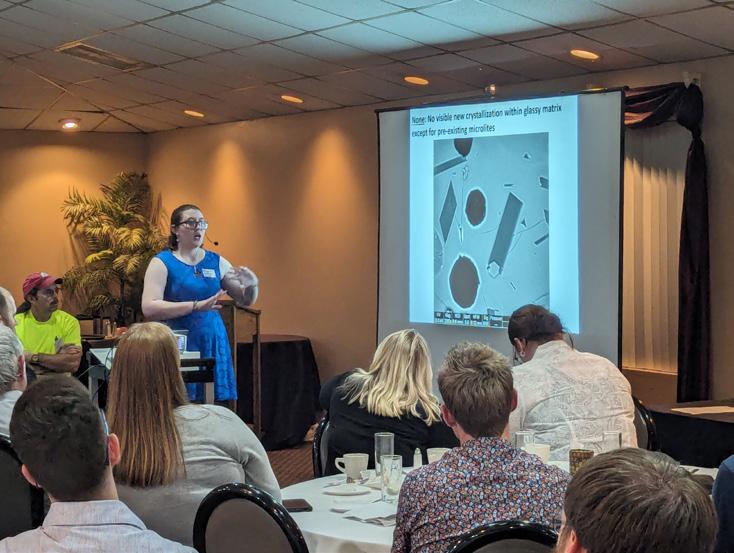
PROJECT: Wyoming Dept. of Transportation Yellowstone Park Attenuators along Chief Joseph Highway
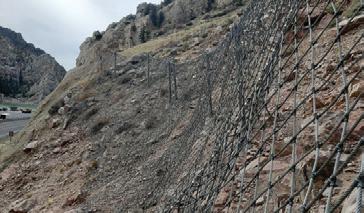

REFERENCES: Arndt, B., Ortiz, T., and Turner, A., 2009. Colorado’s Full-Scale Field Testing of Rockfall Attenuator Systems. Transportation Research Circular E-C141, Oct, 2009.
oral presentations. The AEG Judges Selection for 2024 was “Cross-analysis of Reheated Eruption Samples from Oregon Cascade Cinder Cone Volcanoes,” by Morgan Hoover of Indiana University of Pennsylvania. She attempted to recreate the microcrystalline textures of explosively derived pyroclasts by reheating natural tephra samples from three cinder cone volcanoes. Her results showed the effects of different silica compositions on the timing and extent of crystallization. DID YOU KNOW that the Maccaferri HEA Attenuator outperformed all other products tested?



Brian Greene of Gannett Fleming, Inc., has been working on independent external peer reviews of a variety of projects for Districts of the Corps of Engineers nationwide. Most recently Brian has been involved with the Corps of Engineers on defining foundations for the Emsworth New Lock, the first navigation structure on the Ohio River located below the City of Pittsburgh. The planned expansion involves a new larger lock chamber to replace the existing smaller auxiliary river chamber.
Dave Knott of Gannett Fleming, Inc., has been working on geotechnical investigations for Electric Transmission Lines in southern West Virginia involving coal strip mining, coal deep mining, a mine fire, and landslides, including an ancient landslide about 50 feet deep on the side of a river valley.
Kyle Fredrick of Pennsylvania Western University, CA, has been elected President and Wendy Noe has been elected Secretary of the Pittsburgh Geological Society. Wendy recently accepted a new position at the PA Department of Environmental Protection as Treatment Trust Manager for District Mining Operations. She is responsible for managing the long-term water treatment at trust sites and bond forfeiture sites across the state.
Jim Hamel of Hamel Geotechnical Consultants turned 80 on April 21. He and his wife Betsy took a prebirthday celebratory tour of Laos in March, where they saw the Plain of Jars. There, large jars carved from sandstone and occasionally conglomerate were used as funerary urns, thought to have been made by megalithic Austronesian people 2,000–3,000 years ago, before arrival of the present Laotian people. Many of the jars were damaged or destroyed by U.S. bombing of the Ho Chi Minh Trail during the Vietnam War. In May, Jim and Betsy took a nostalgia trip to Rapid City, SD, where they lived from 1969 to 1972, when Jim was an assistant professor of civil engineering at the South Dakota School of Mines and Technology. In addition to visiting the school and other old haunts, they visited the Crazy Horse Memorial being carved from a granite mountain in the Black Hills (photo below). When completed, the memorial will be 563’ high and 641’ long.

Nichole J. Vetter, PG, AEGF Director
The AEG Foundation (AEGF) is excited to announce both a virtual and in-person Silent Auction for this year’s Annual Meeting in Philadelphia! The virtual auction will be live September 1, 2024, at 9:00am EST and will end September 12, 2024, at 1:00pm EST. The in-person auction will begin during the Ice Breaker on September 10, 2024, and end at 1:00pm EST on September 12, 2024. The proceeds from the Silent Auction will benefit the Diversity Funds. As a reminder, you can make a donation to the AEGF at any time by clicking on the Quick Donate button on our website: https://aegfoundation.org/.
The AEGF is still looking for donations for both the virtual and in-person Silent Auction. If you have an item that you would like to donate, please email a photo of the item along with the description and approximate value, and indicate whether you will be attending the Annual Meeting and bringing the item with you to staff@aegfoundation.org. Ideas include a product made from a hobby (photographs, paintings, pottery, jewelry), gift cards, minerals, and rocks. So far, the AEGF has received donations of Penzeys Spices/gift card, Truly Free Nontoxic Cleaning Products, and S’well products.
AEG News Welcomes Your Feedback.
Comments, suggestions, or questions should be sent with the writer's name, address, and daytime phone number via e-mail to news@aegweb.org.

Advance your career and make an impact in environmental geology, hydrogeology, and engineering geology—all online.
• Expand your applied geoscience or engineering geology knowledge
• Learn from experienced industry experts
• Prepare for your next professional move ahead
Earn a master’s degree, complete a graduate certificate, or take a class.